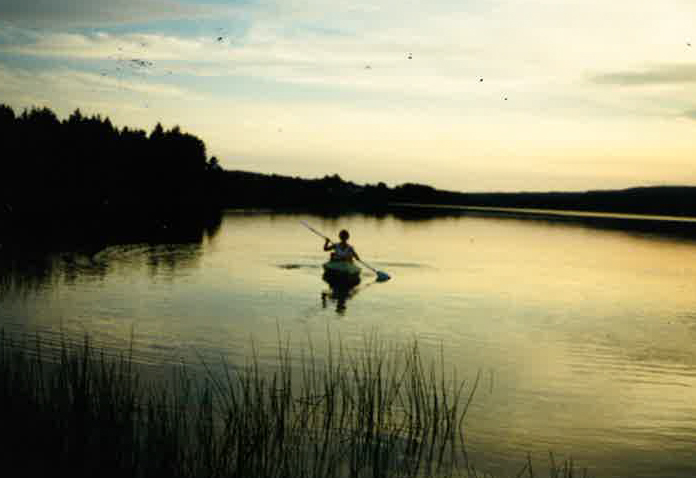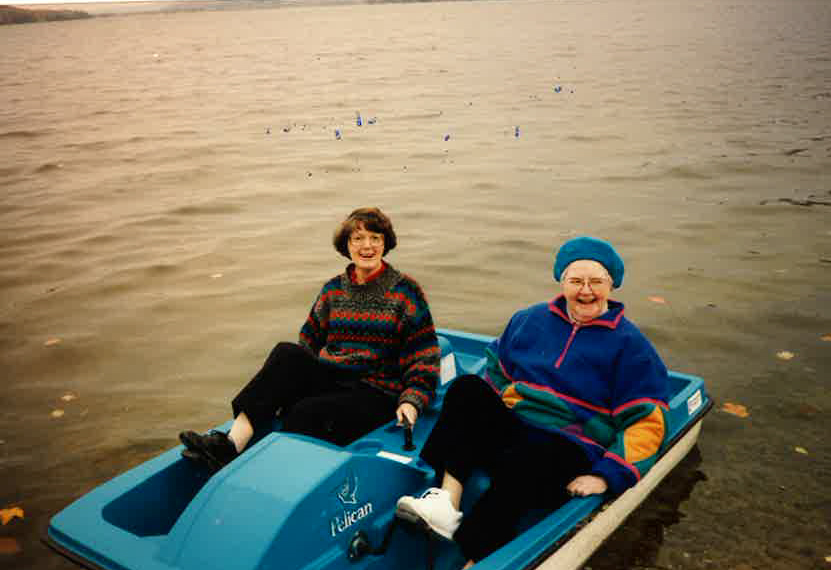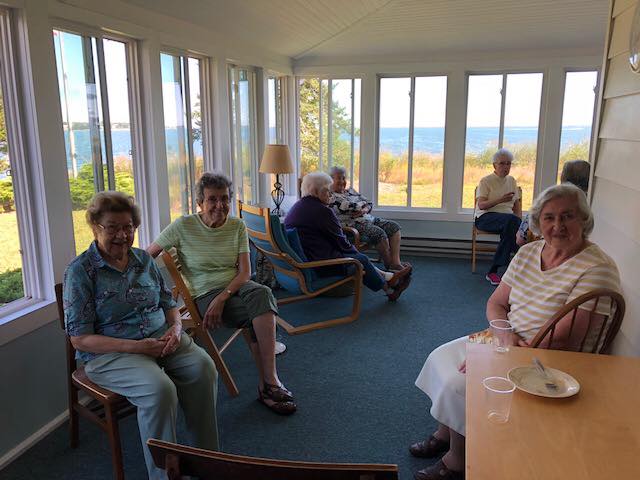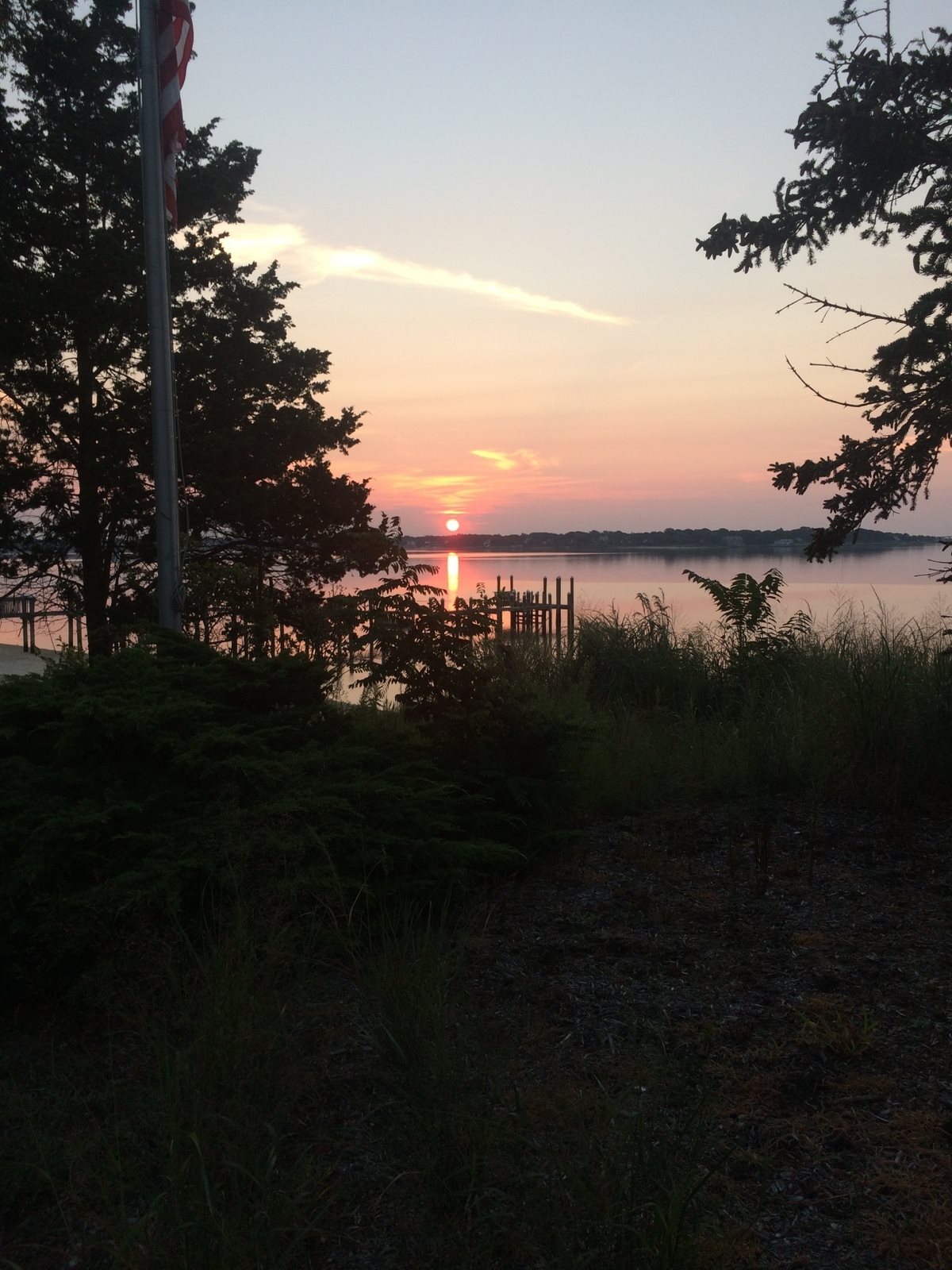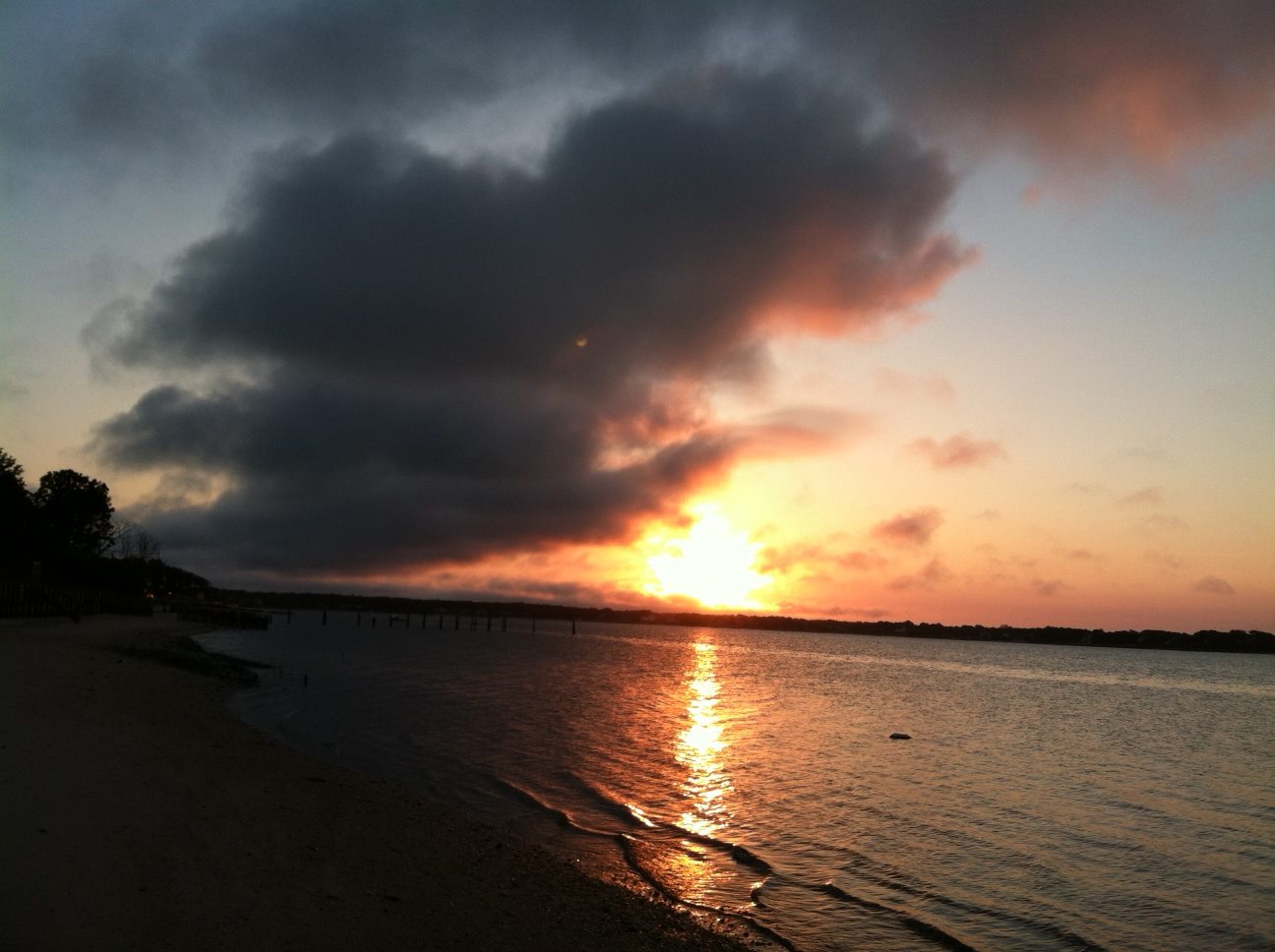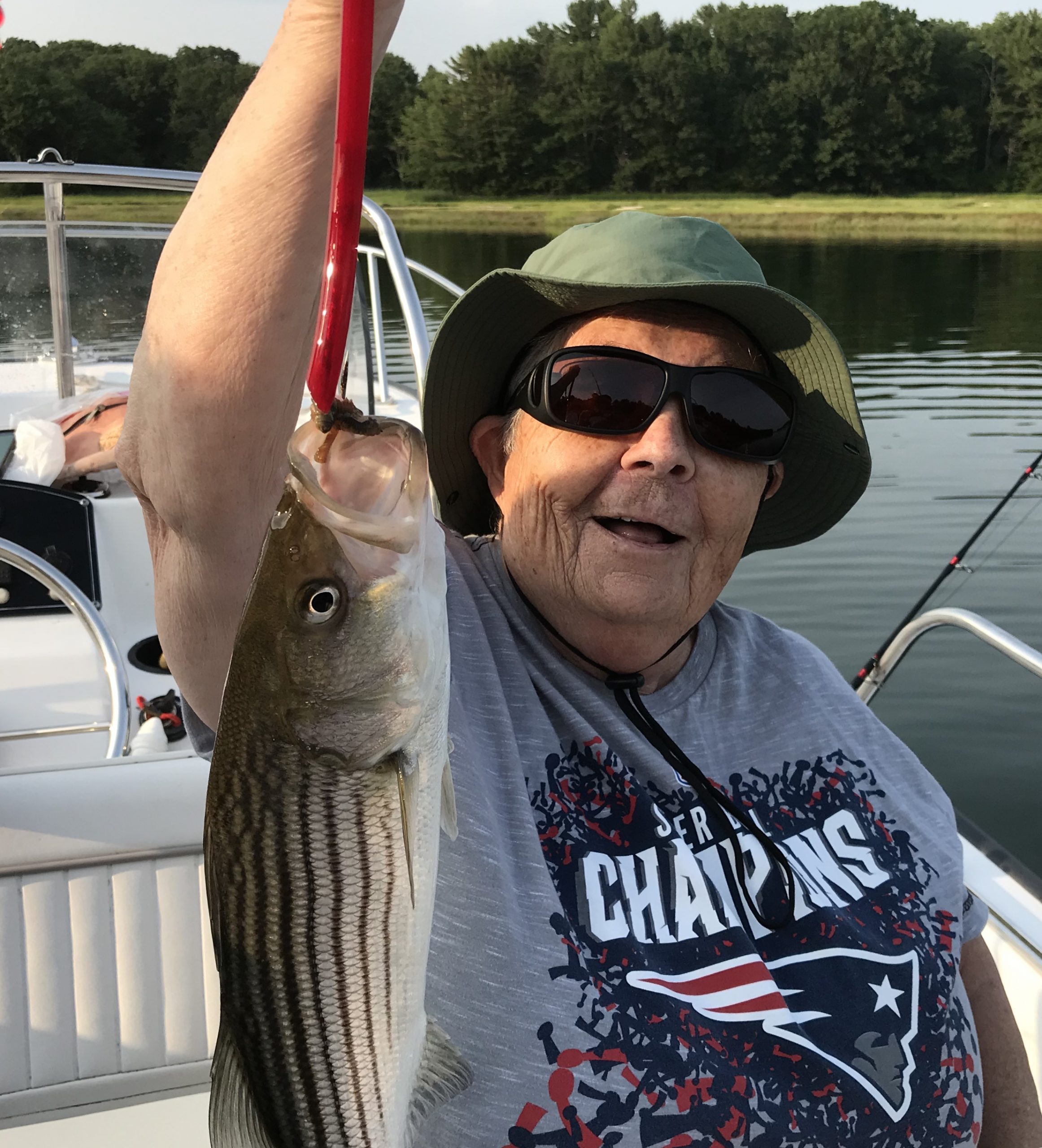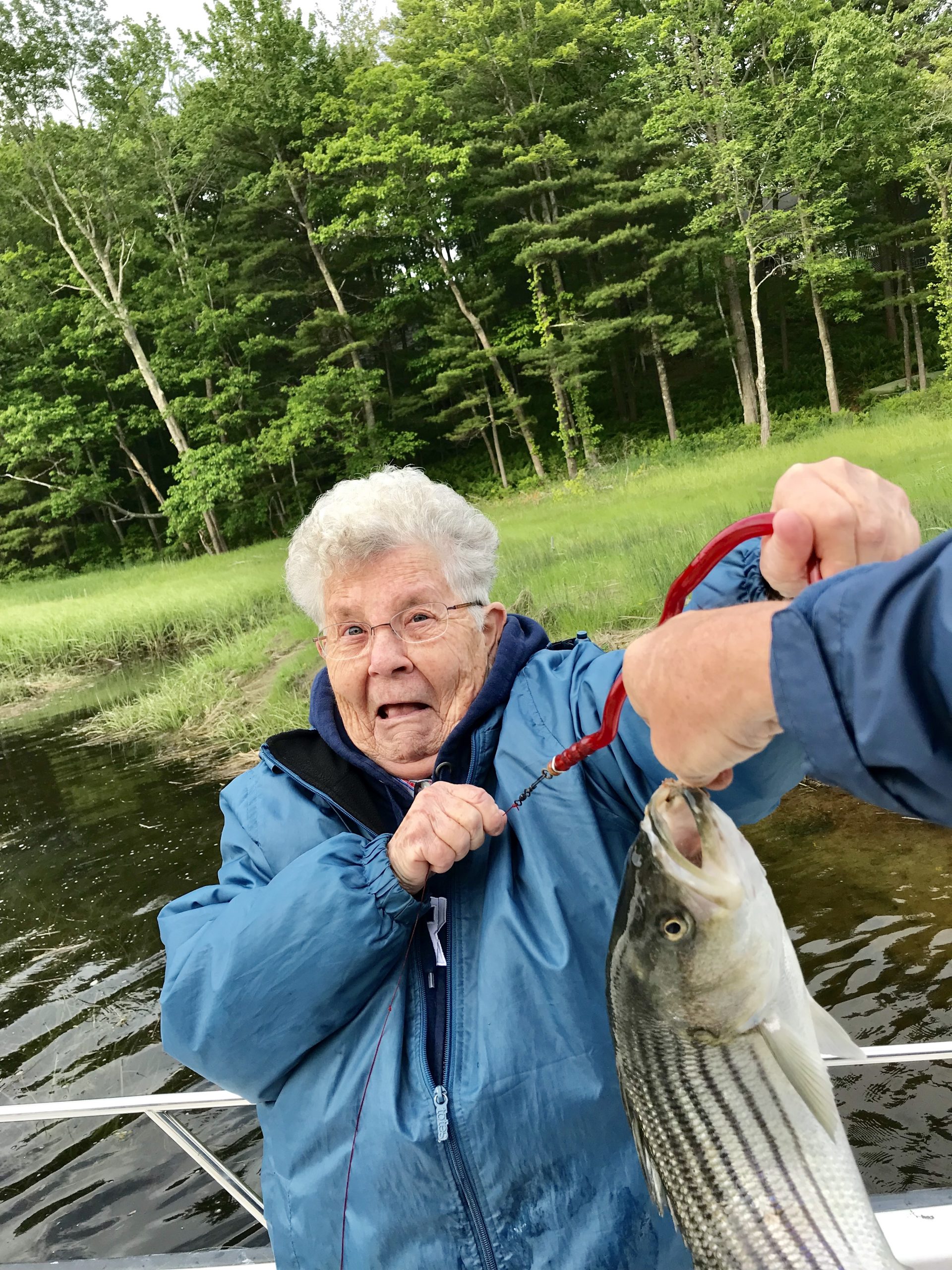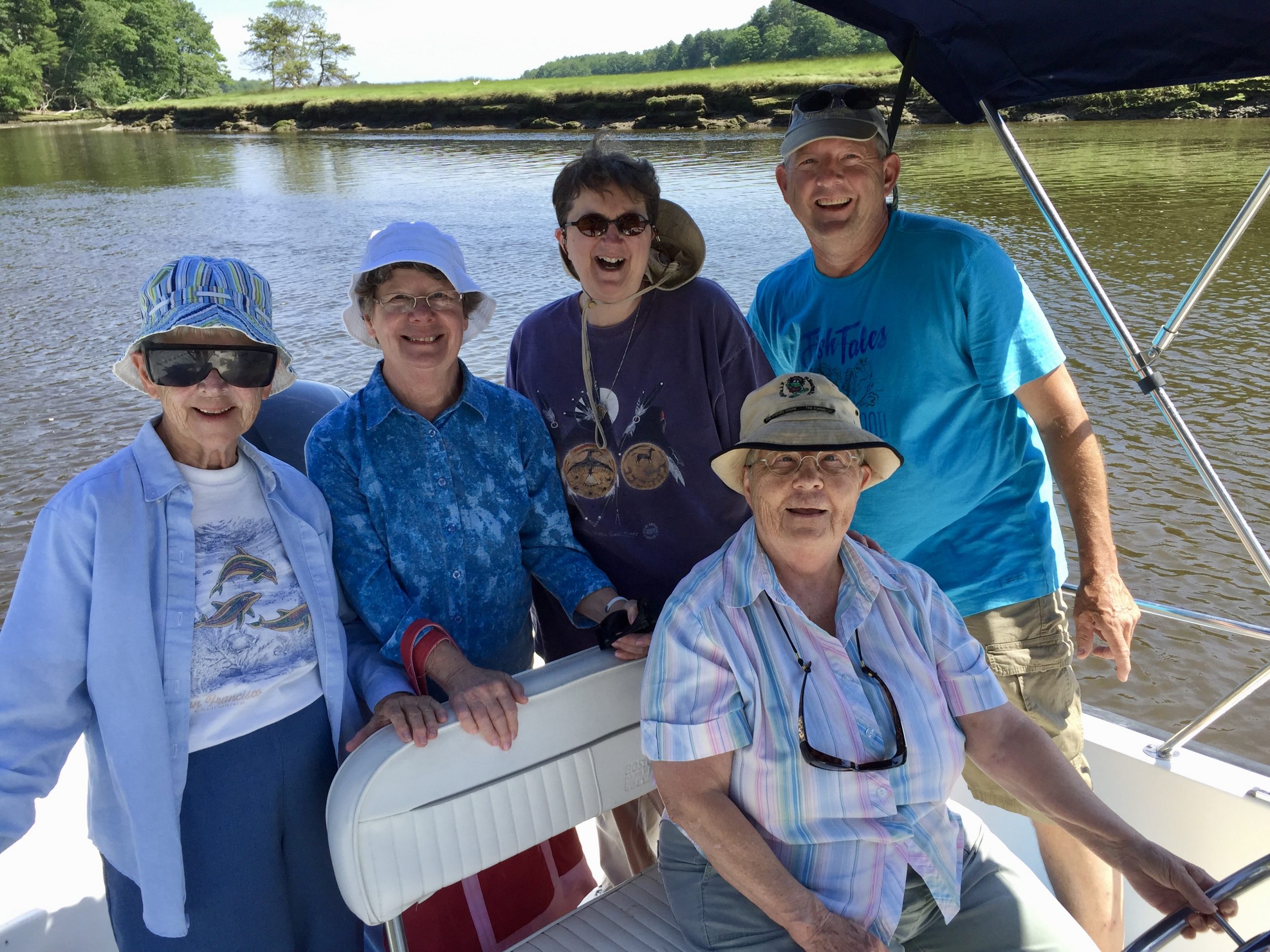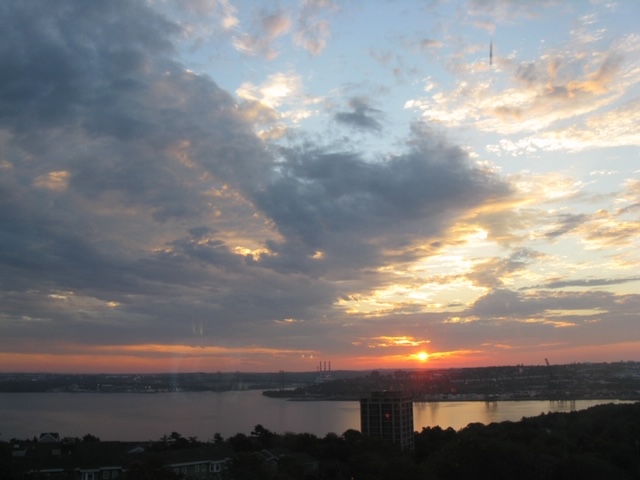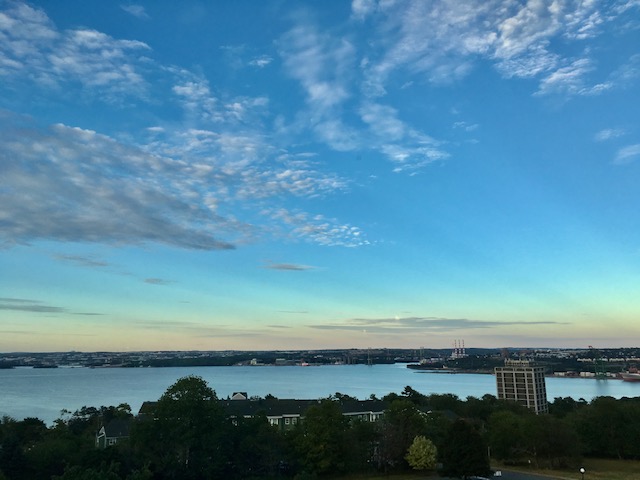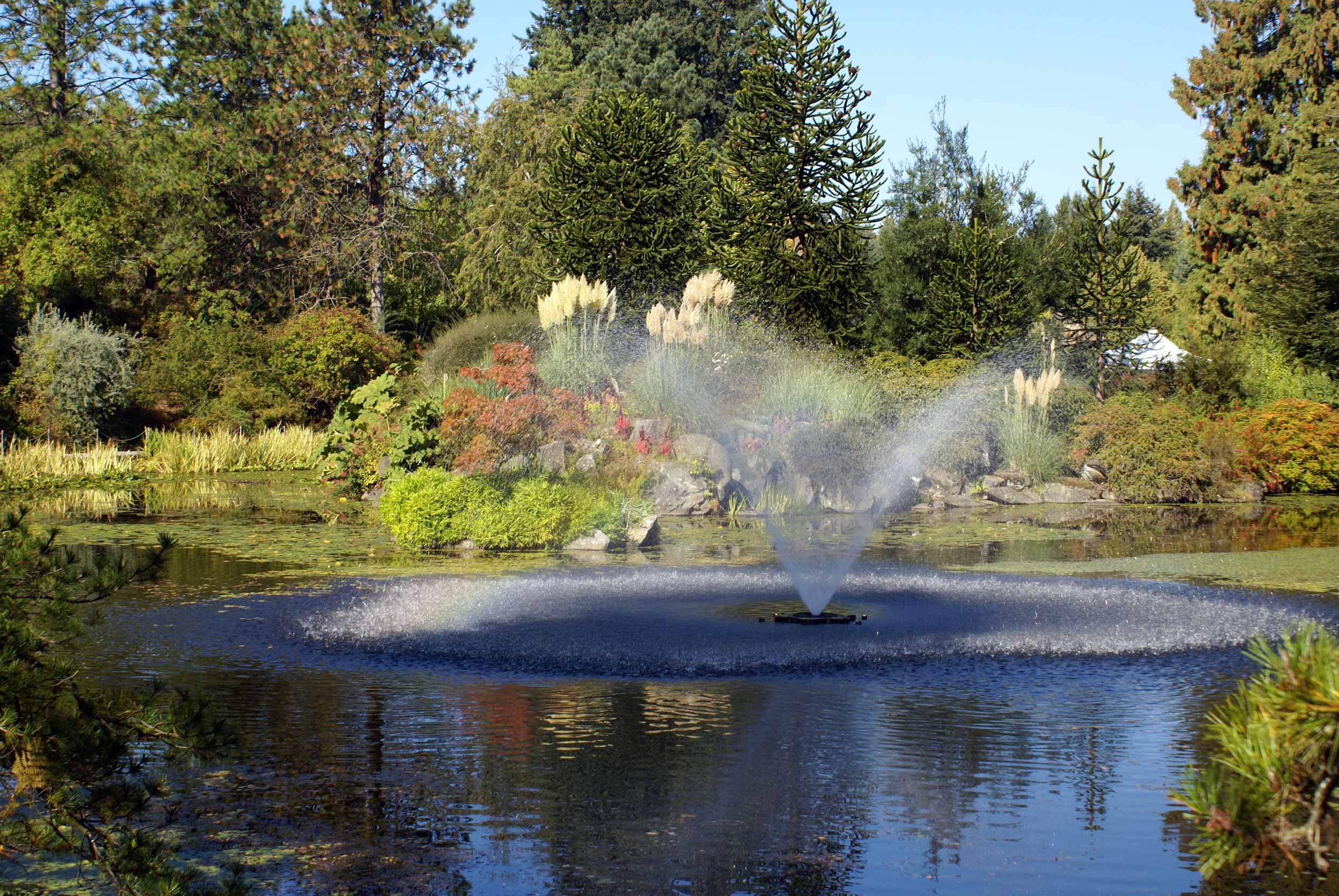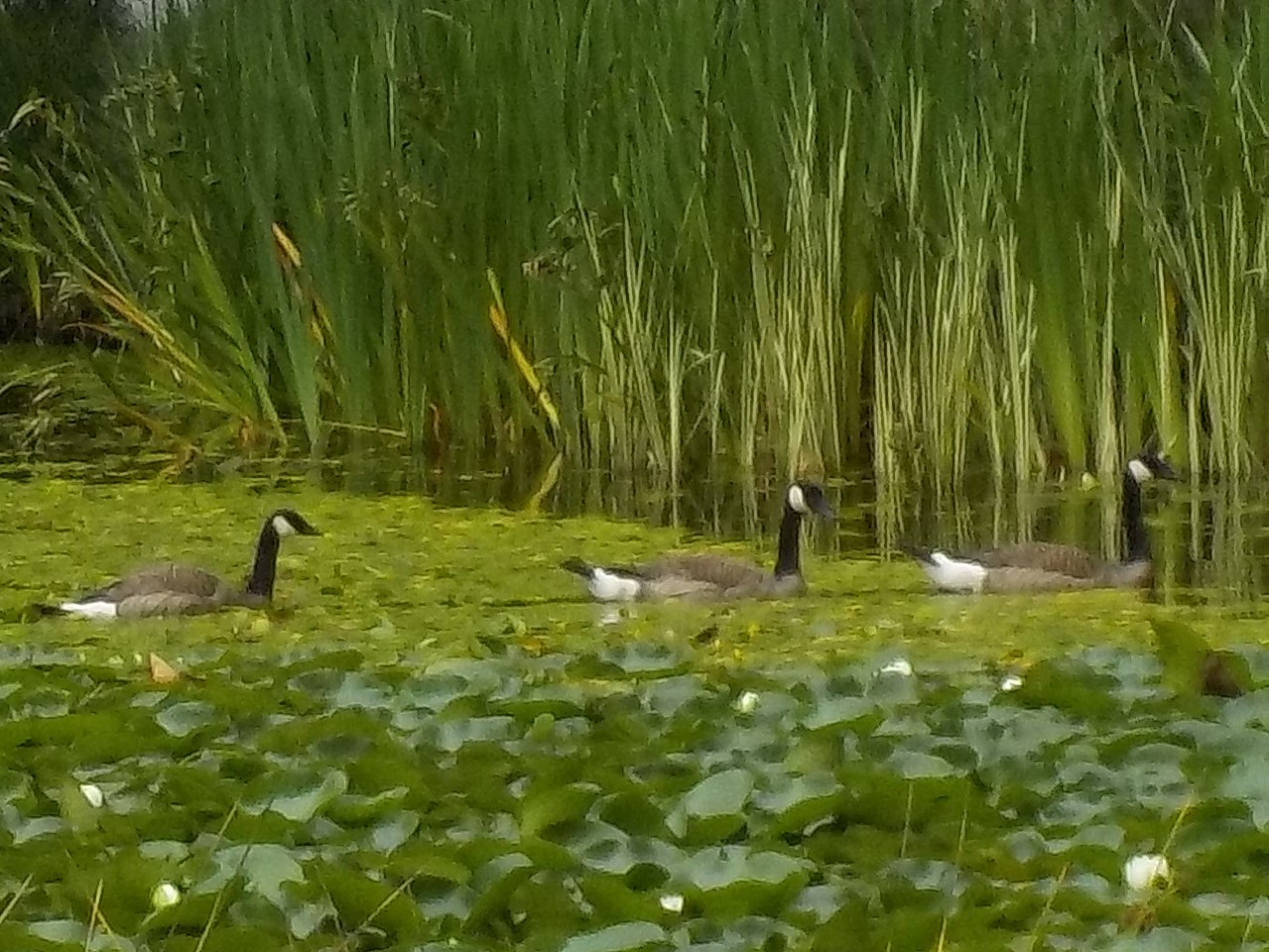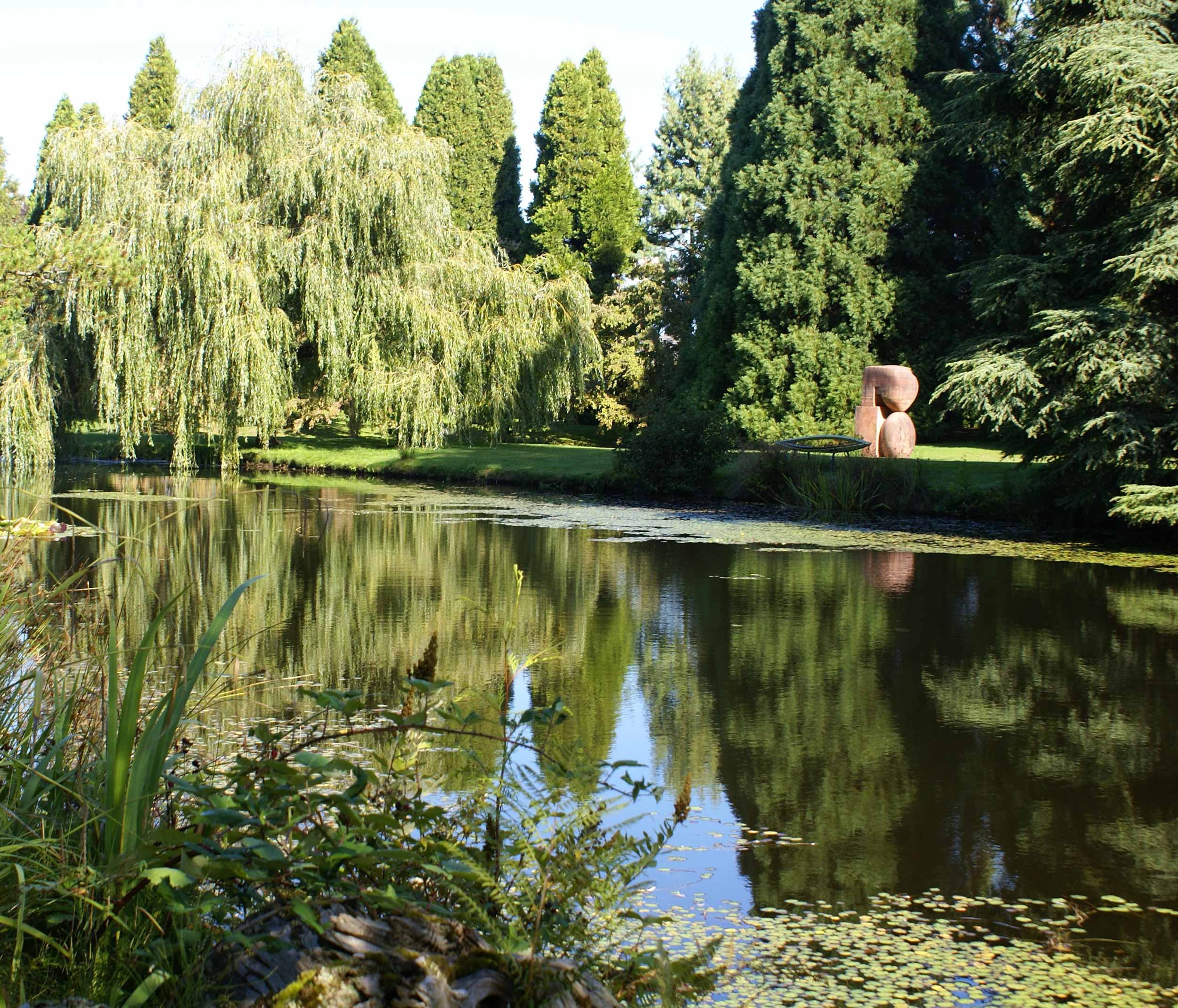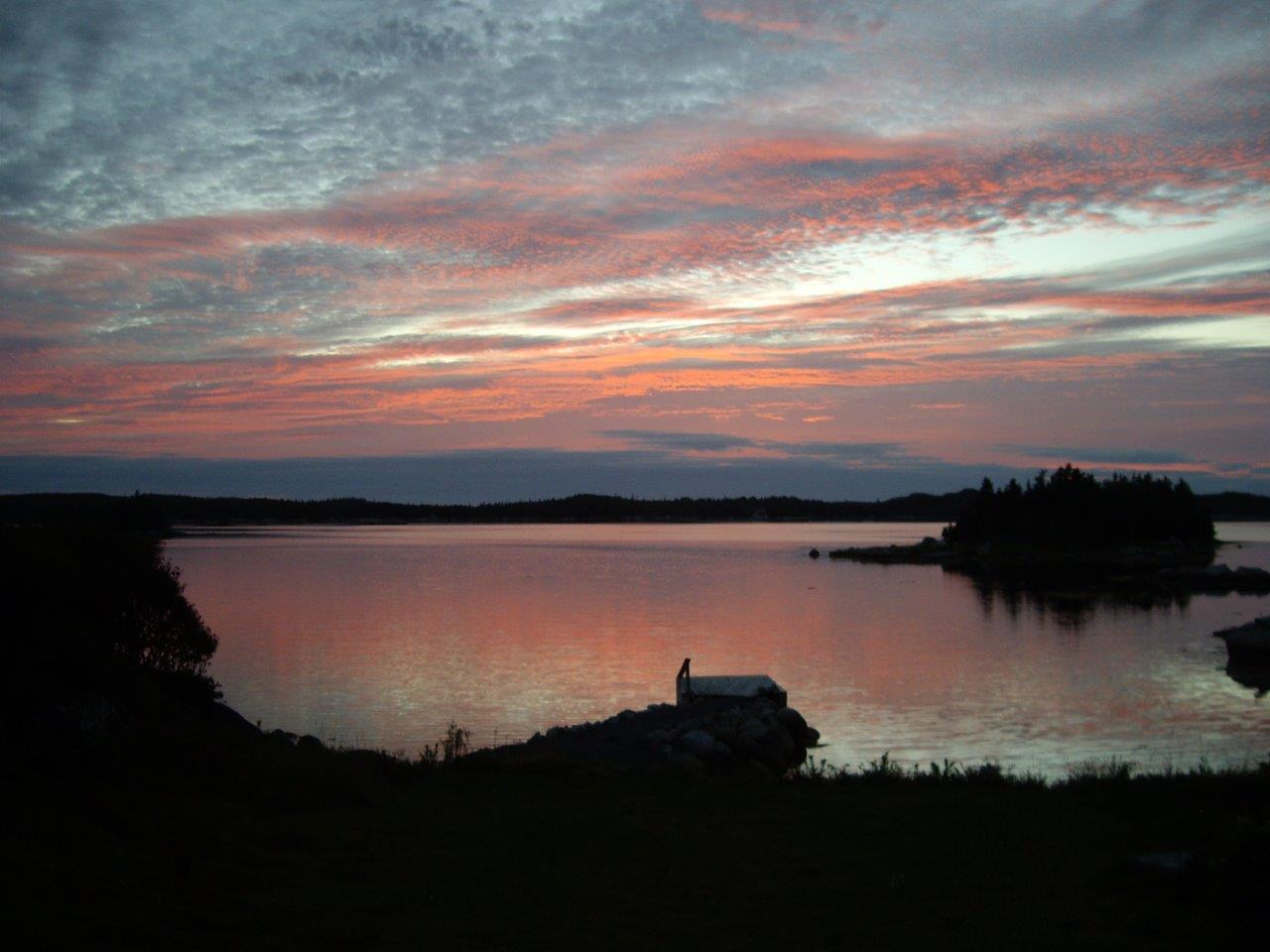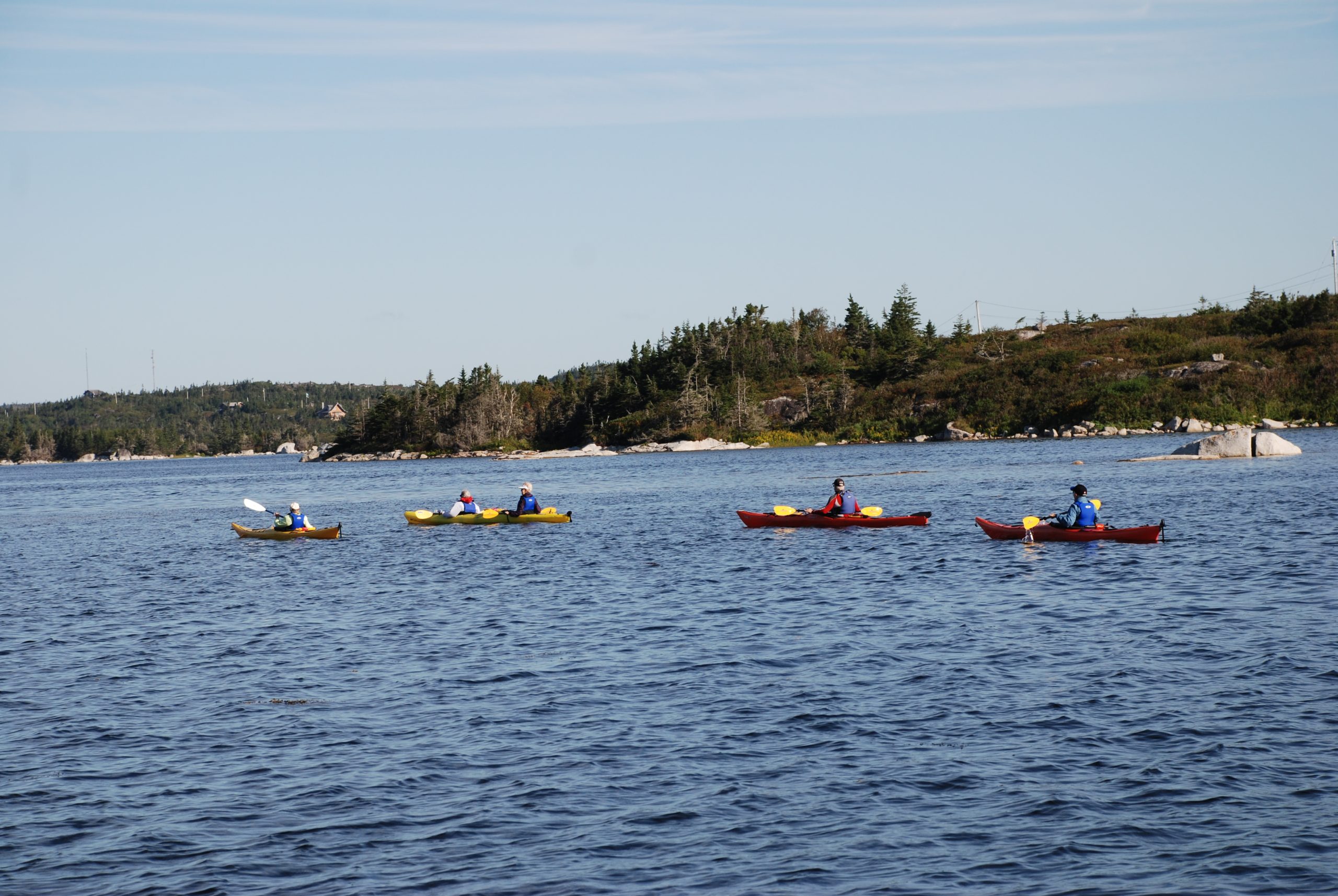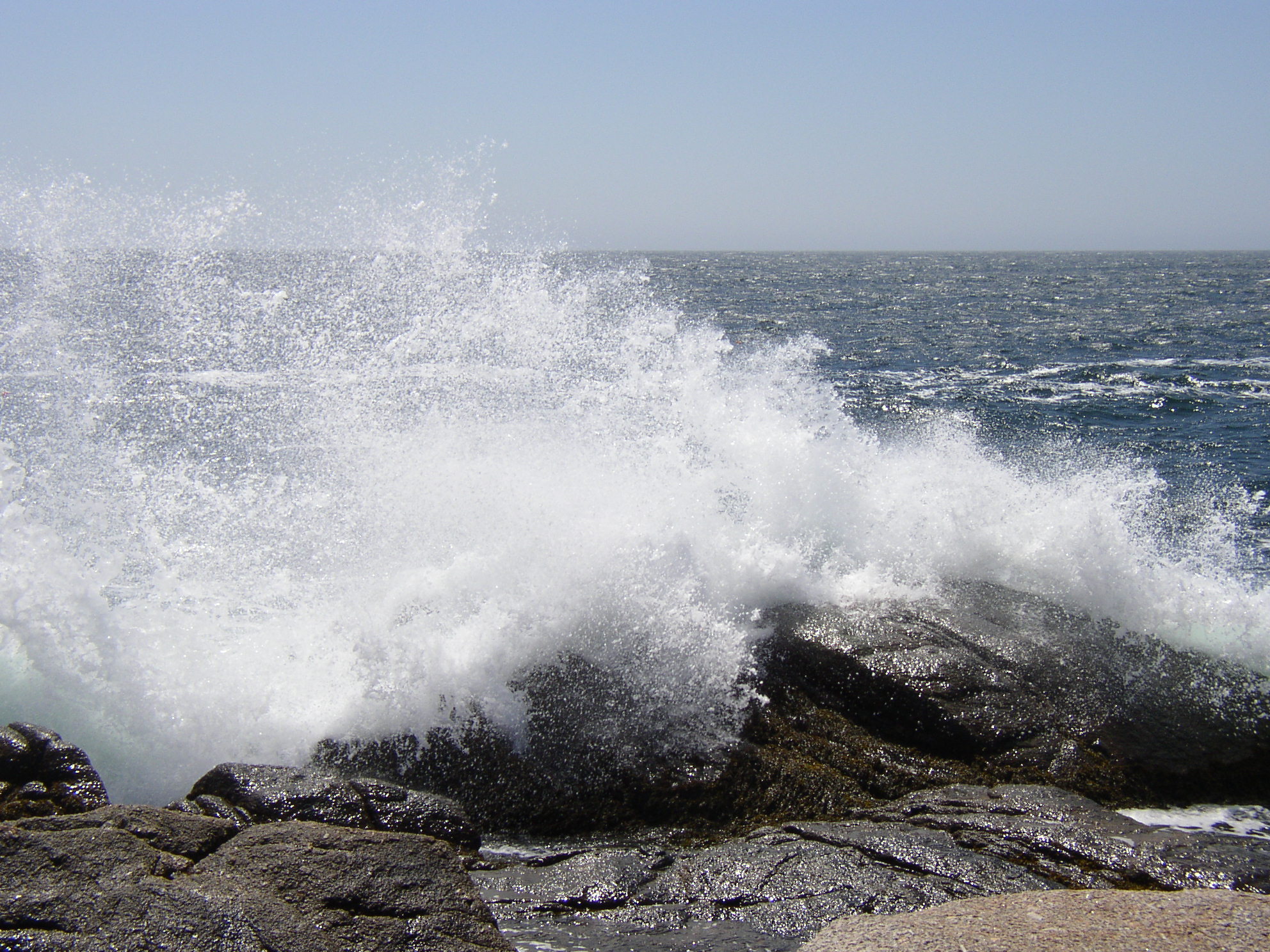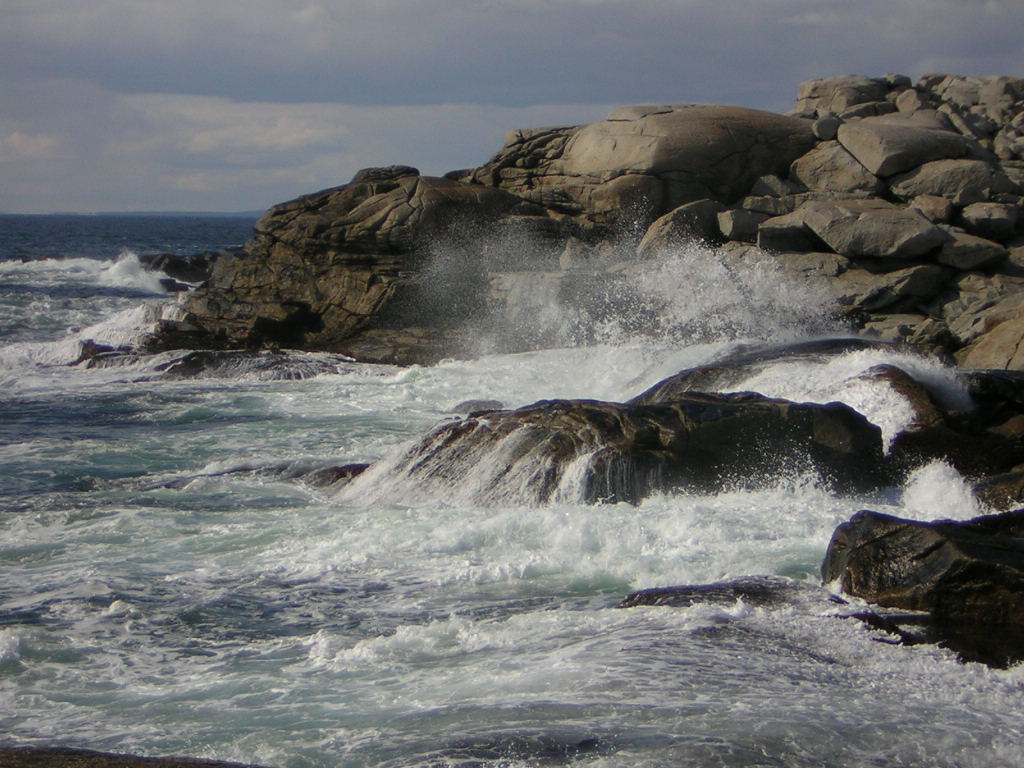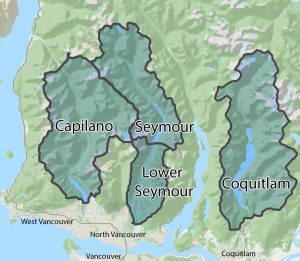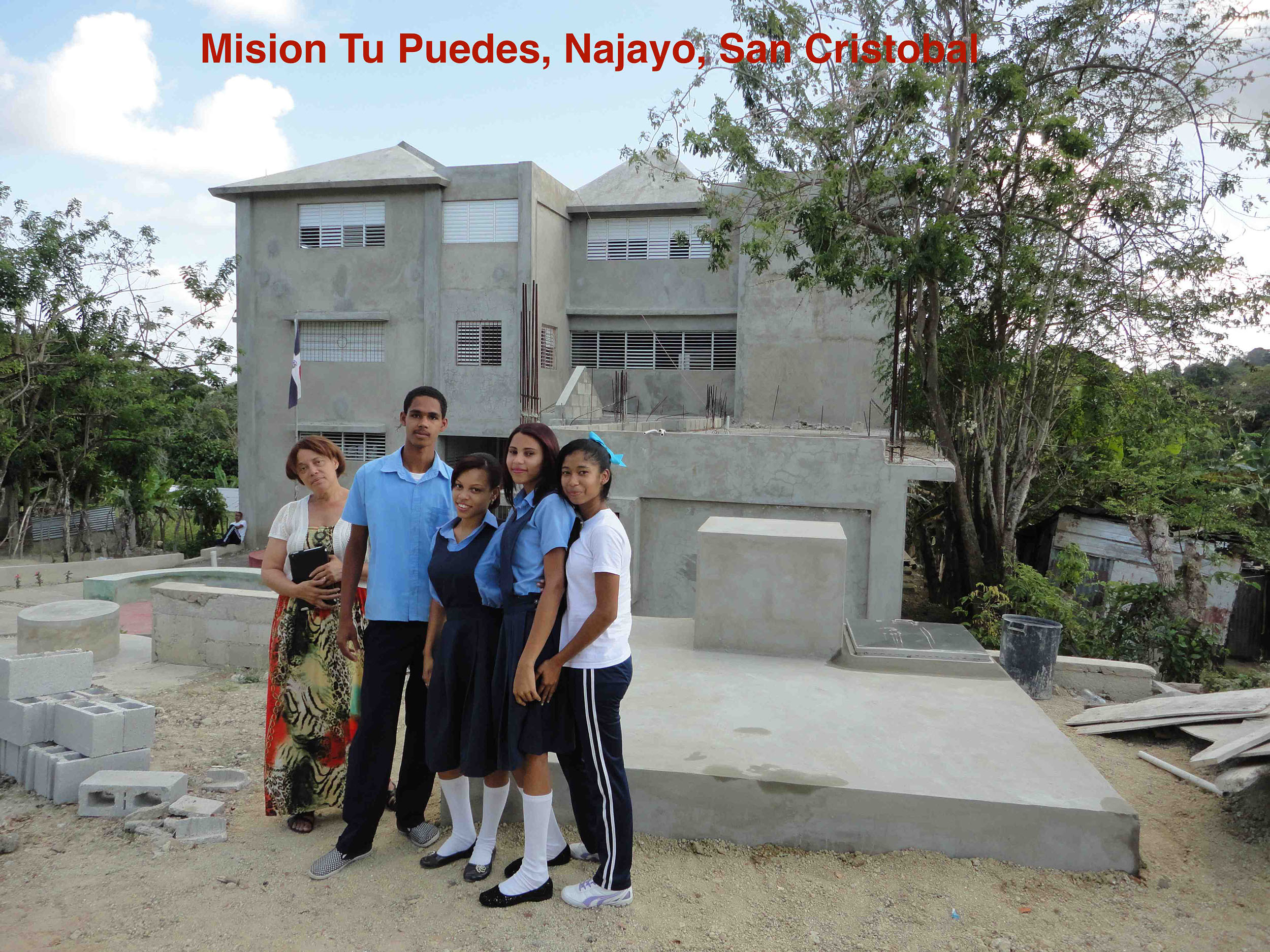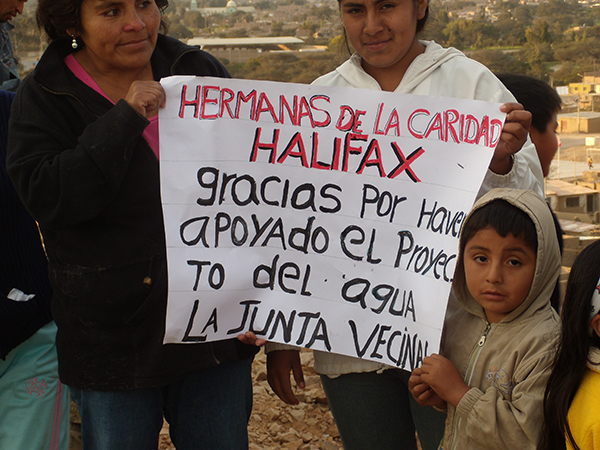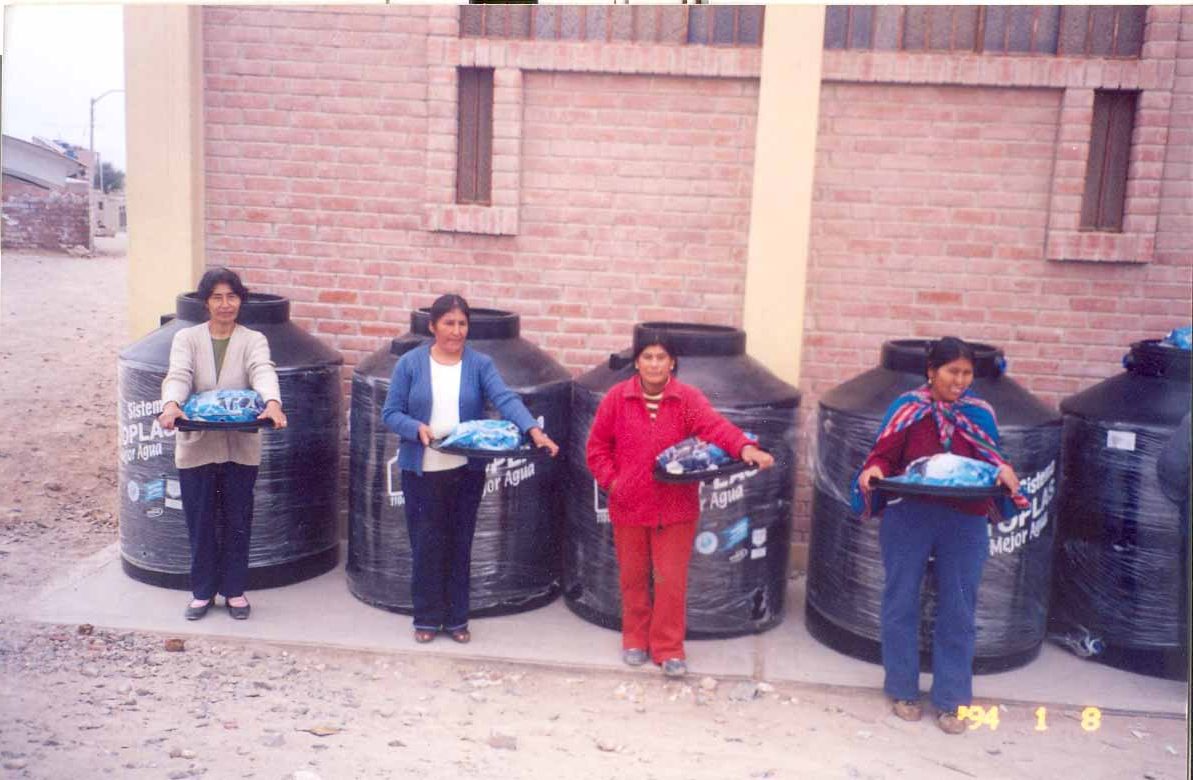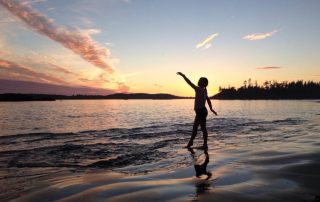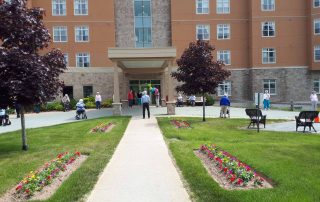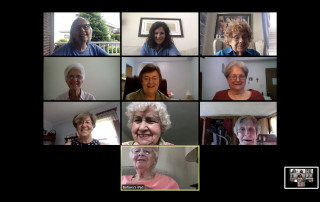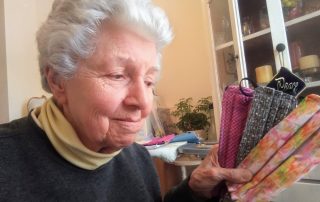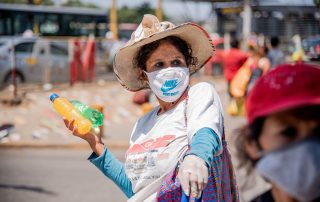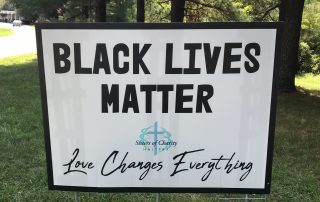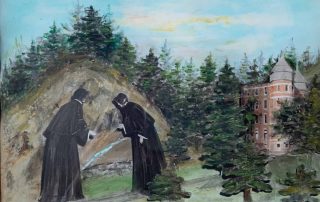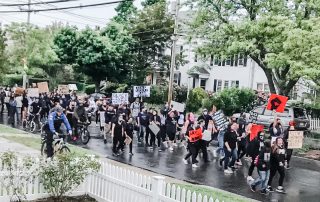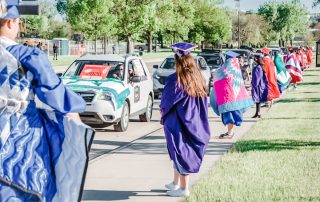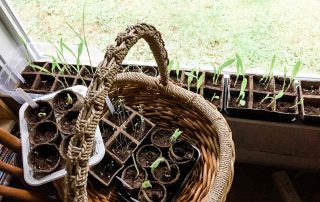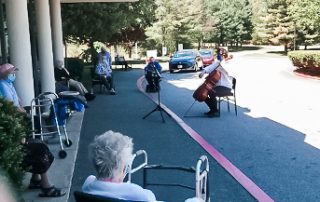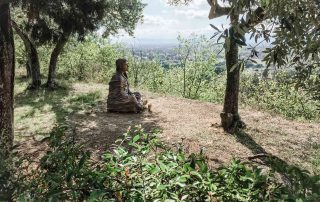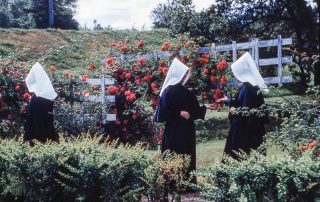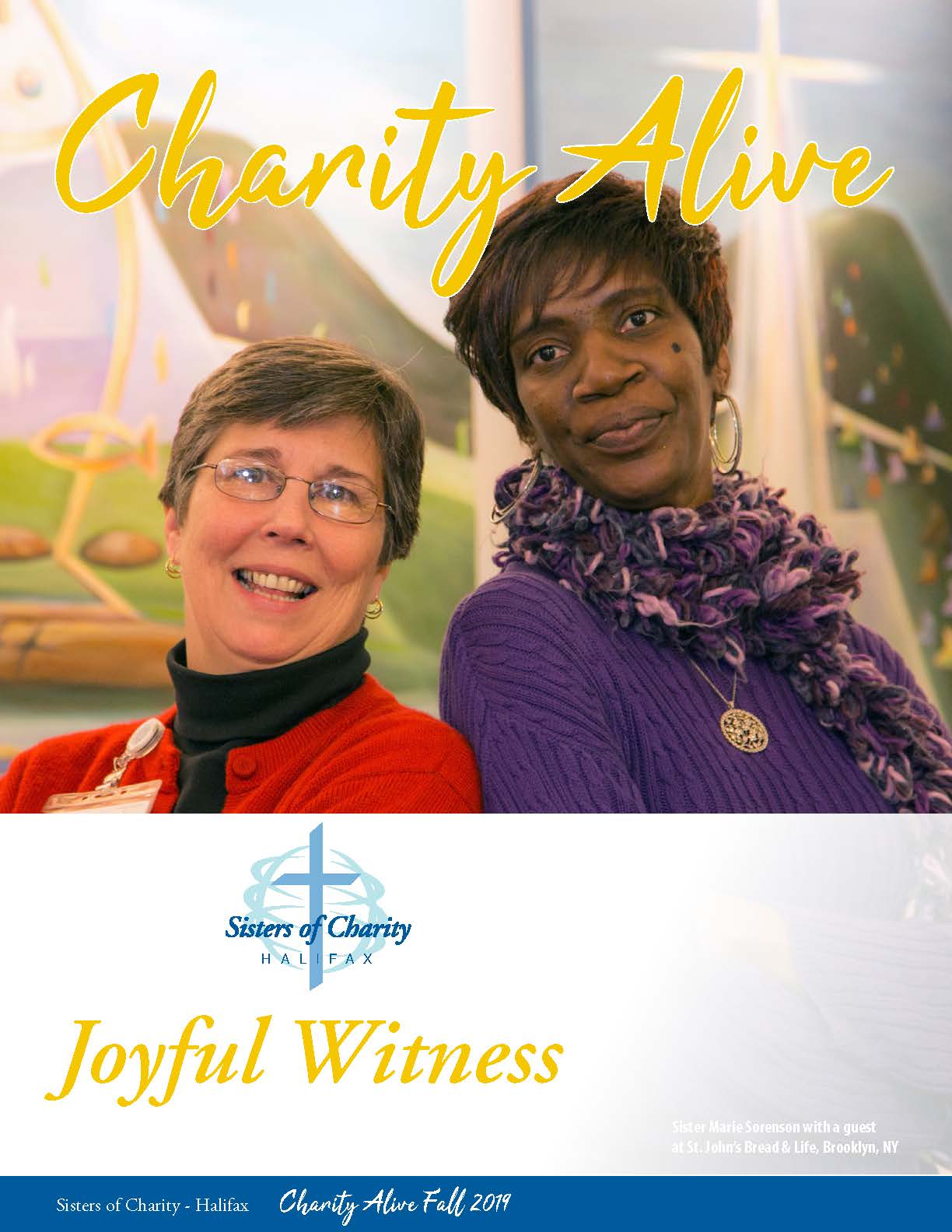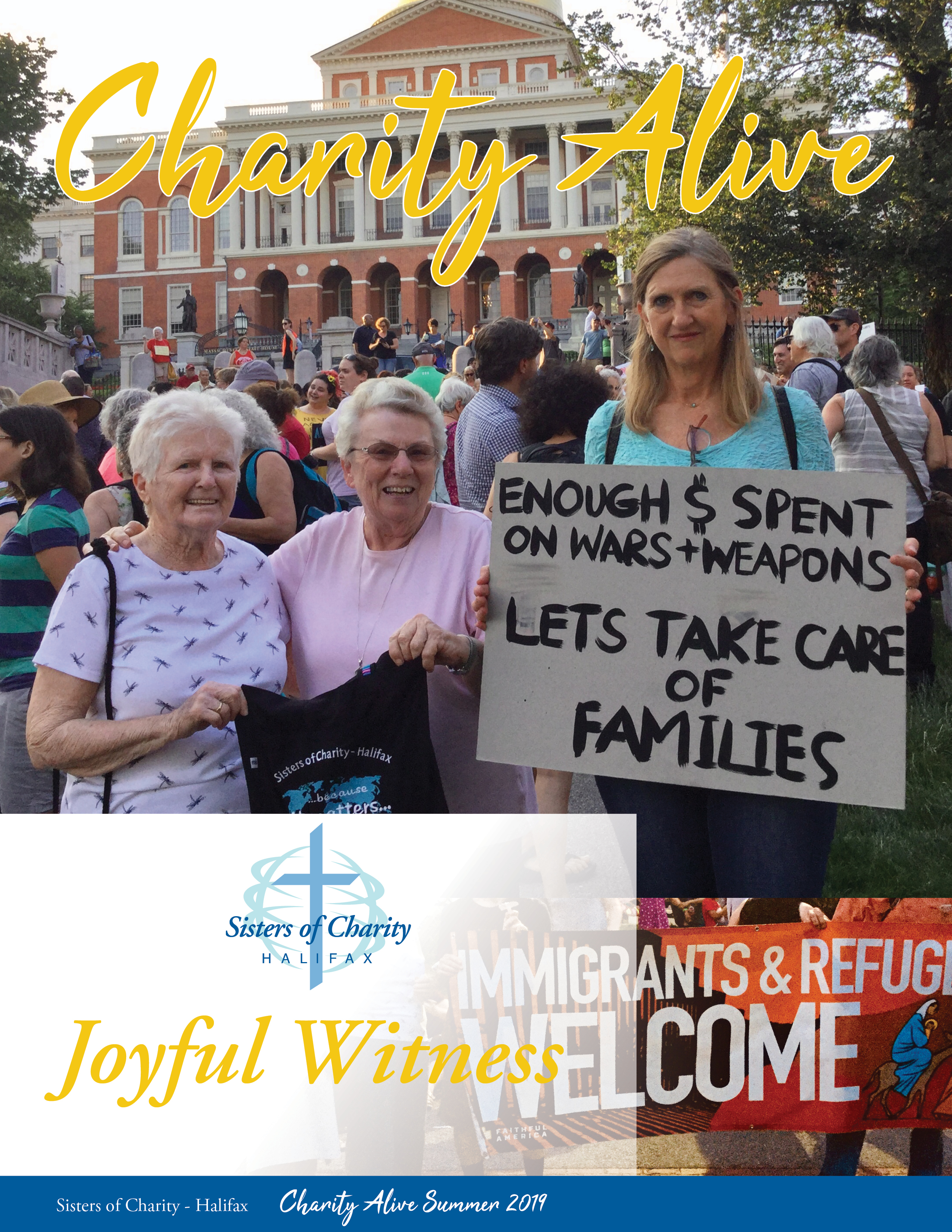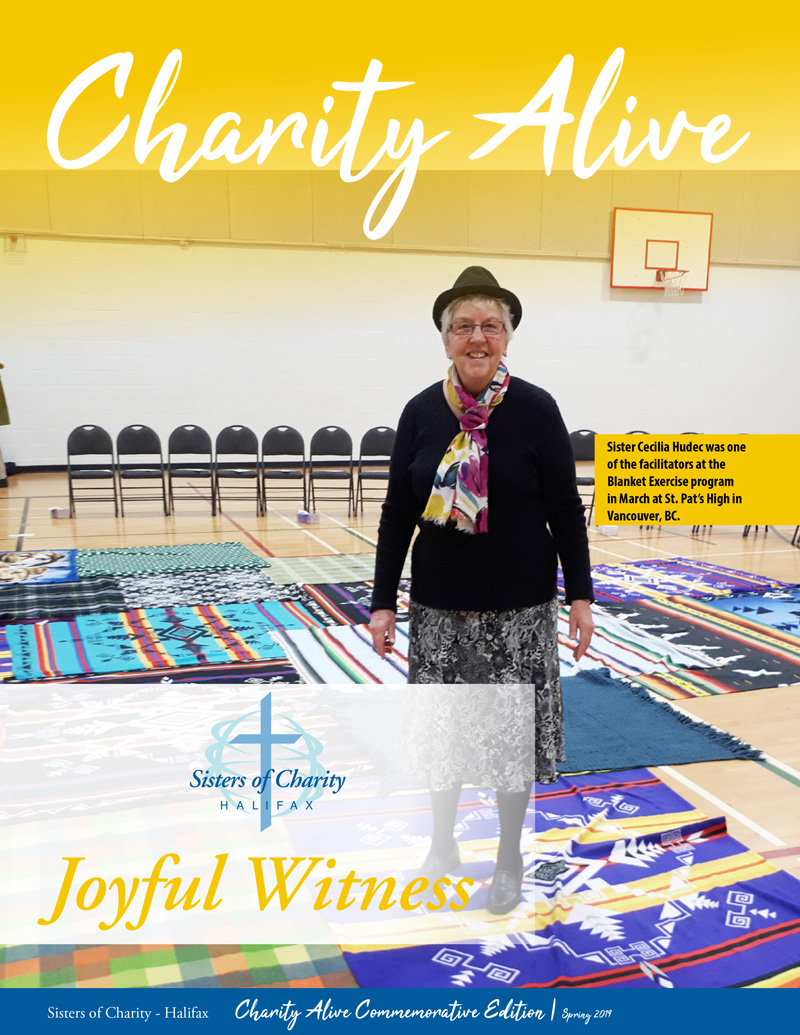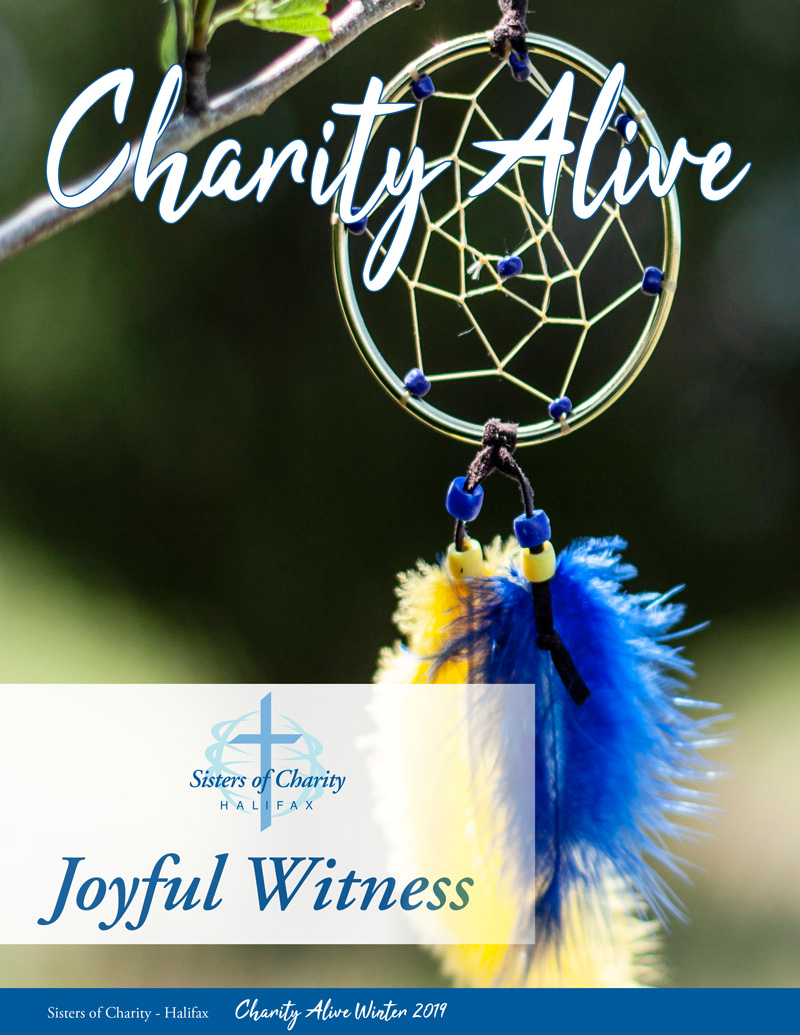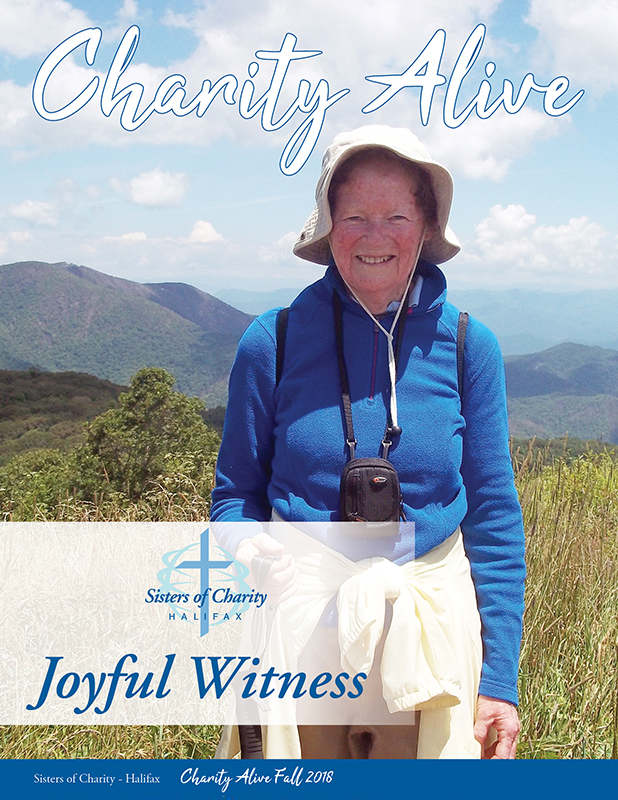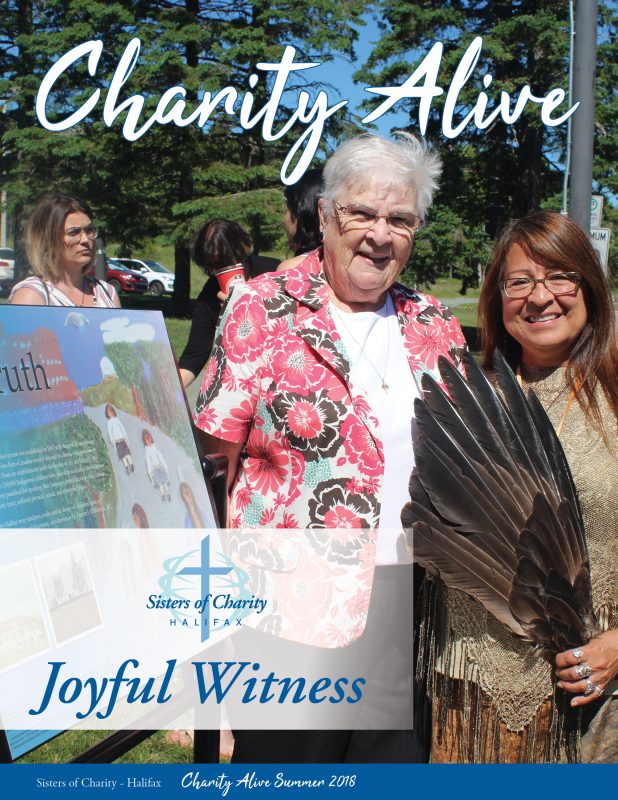by Sister Roberta Kerins, New York
Not only the thirsty seek the water…
The water as well seeks the thirsty (Rumi)
Water is such a unique gift. As a species we emerged from water. In our mother’s womb we live in water, are protected by and are born from that water. We can’t exist without water. Our adult bodies are about 60% water. And what can be more refreshing than a cold glass of water on a hot day?
Yet, water in the form of oceans, rivers and lakes, snow and ice can renew us in totally different ways. The quiet of a lake can center us; the power of the ocean can energize us; mountain snows can exhilarate us. These experiences can lift our spirits, touch our souls, or even move us to encounter the Holy. The essays on water which follow allow us into the reflective space of the authors. Enjoy!
Reflections by Sisters
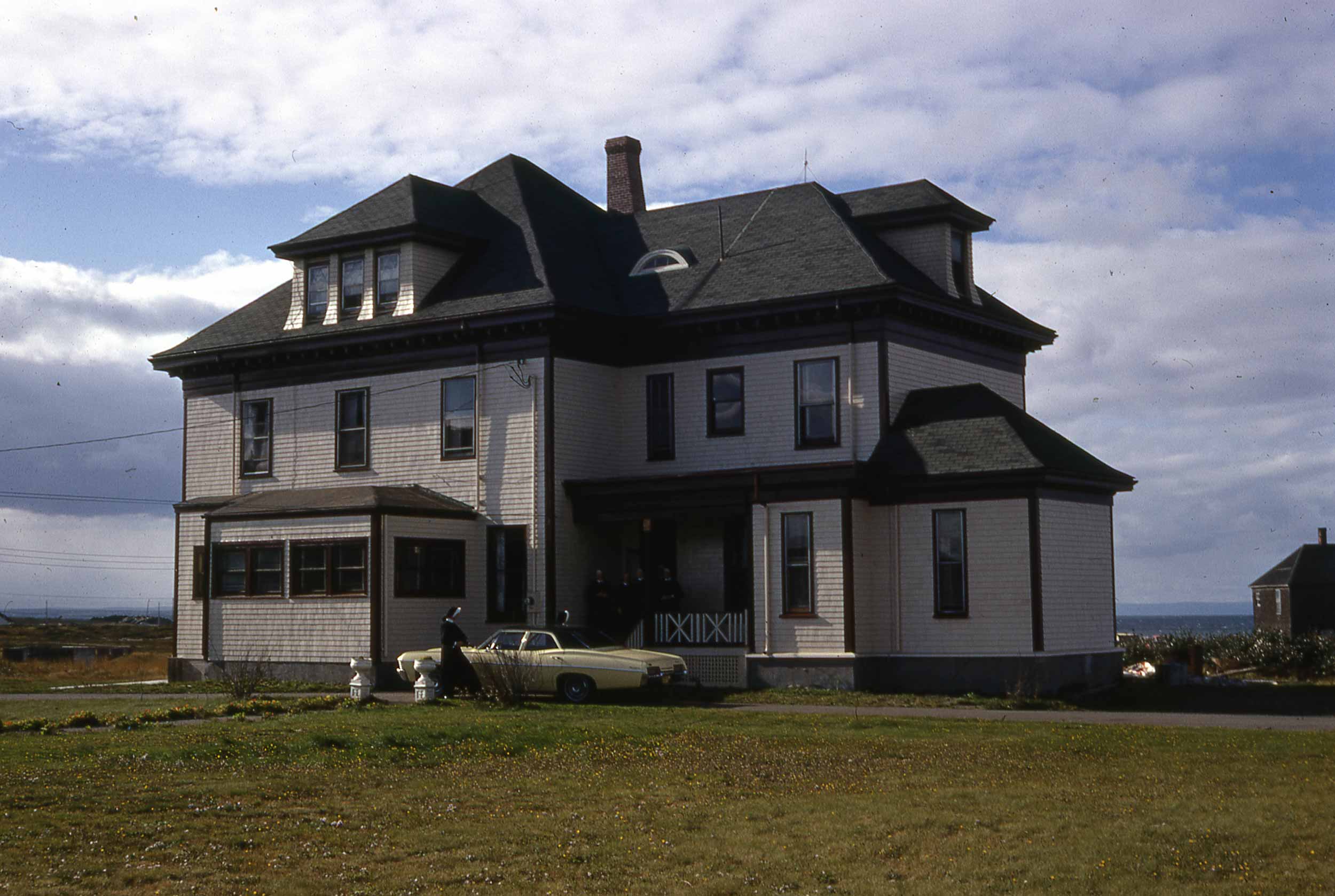
Sisters of Charity Halifax Congregational Archives GA-067 Saint John Convent, New Aberdeen, Nova Scotia, 1967.
Water! Water! Everywhere!
by Sister Martha Eileen Burrows, Cape Breton, NS
I have many memories of the ocean water, mostly good, some not so good.
The ocean is beautiful to watch and behold, whether it is calm and peaceful or stormy and wild. It is always beautiful. God made it and gave it to us to tend.
We had a small room in the former St. John’s Convent where there was a large picture window overlooking the ocean. Here, one could easily meditate on the ocean. One could almost picture Jesus walking along the water. Sometimes the waves would be calm and peaceful as in Psalm 23:2 – He leadeth me beside still waters. Other times they would be rough and wild as in Mark 4:39 – Jesus got up and commanded the wind: “Be Quiet” and said to the waves “Be Still” The wind died down and there was a great calm. One could see the beauty in them both ways. It was beautiful to watch, either from this room, by the cliff, or from a distance. It always had a lot to offer.
From this room we also watched the lobster boats go out to set their traps on May 15th. They went out very early in the morning about three am and came back around three in the afternoon.
Every May the Pastor always blessed the water before the children went in swimming. It was on a designated day and swarms of children would make their way from the school to the cliff on Eleventh Street for the blessing. Many would come prepared and go for the first dip after the water was blessed. No one went for a swim unless the water was blessed and they didn’t mind asking Father about it especially if the weather was warm.
One dangerous habit the boys had was to go “squishing” in the spring when the ice clampers came in along the shore. They would try to jump from one clamper to another clamper without falling in. Most of the time they were successful and they made it safely. If they didn’t make it the other boys came to the rescue. The boys thought it was fun. It was a dangerous adventure and one I am sure the mothers didn’t approve of, especially when they went home soaking wet. There was no doubt what they had been doing.
Many a day we spent watching the children swimming at the beach or diving off the reef on Eleventh Street. They were good to one another. If someone came from the beach and didn’t know how to dive it wasn’t long before they knew how, even though the water was deep. It was either swim or drown. All of them would rather swim. So many friendships were made during that time.
Every summer we took the children who took part in St. John’s Church – the altar servers, the readers, those who took part in the Gospel Dramatizations – to a picnic at St. Agnes camp ground. This was Sangare Island where there was always plenty of water for swimming. We always hired a nurse and swimming instructor for the children’s safety. The children had a great time swimming, etc.
Then there was the parish picnic at the former St. John’s Parish Camp Grounds in Northside East Bay. The parishioners were happy to go swimming in the familiar waters. In these same waters the children, who came to day camp, had a great time swimming.
Sister Melda, myself and a few more adults supervised the children. We had as much fun as they did. When I was a child, my mother would pack a lunch in a suitcase my dad had made and we were off for the day at the Glace Bay Beach, to cool off in the ocean. We would arrive home blistered from the sun but we had a good time swimming or playing on the beach during the day.
I remember the strong channel near the present Glace Bay Hospital, and the walking bridge that was built over it. It took you over to the Big Glace Bay Beach, another swimming area of the ocean. A storm came and washed the bridge away but the channel is still there.
“… but whoever drinks the water I give them will never thirst. Indeed, the water I give them will become in them a spring of water welling up to eternal life.” John 4:14
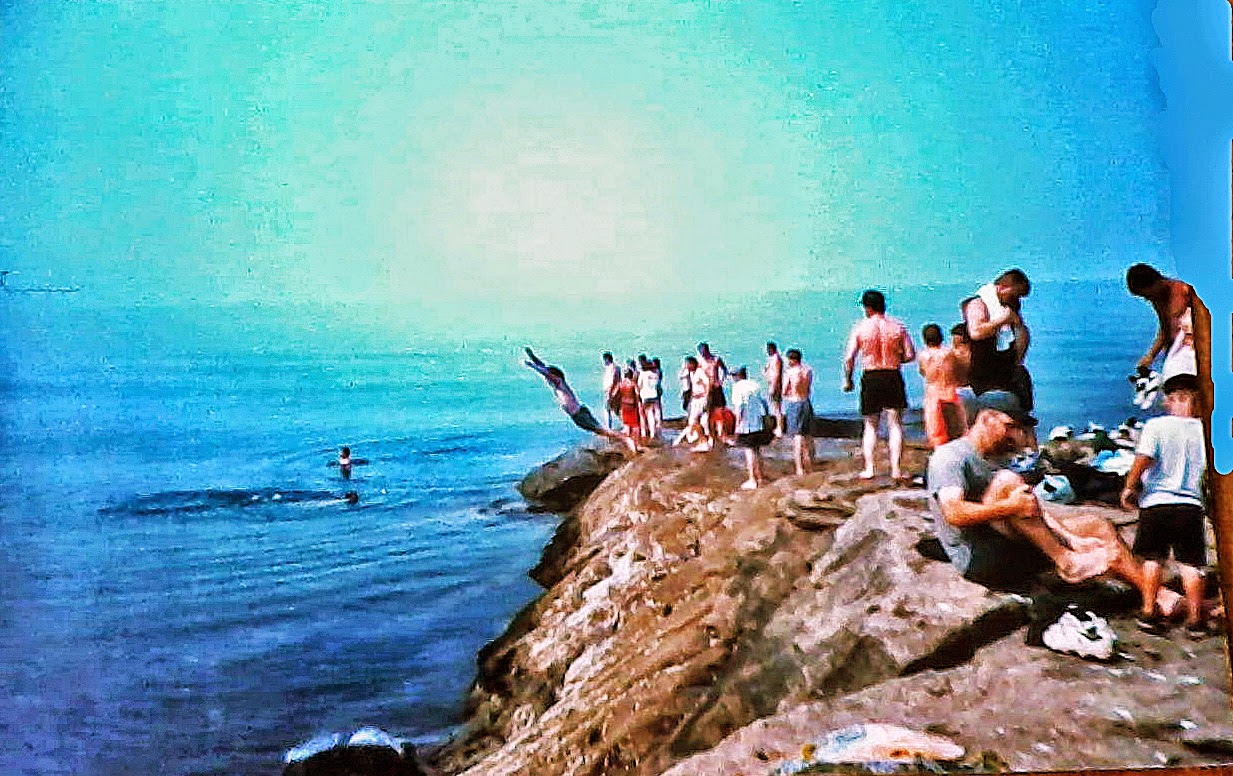
Waters from Heaven
by Sister Melda Comeau, Cape Breton, NS
One of my first memories from home was the first thing I saw in the mornings, was the Sissiboo River (Yarmouth, NS) just across the street. It was our playground, it served as a source of food, fish, clams and mussels. Even our wood for our stove was rowed up the river. We depend on the water for so much.
On my first home visit I had a Superior who thought it would be “unreligious” for me to go in a boat while I was home. (Didn’t Jesus go in a boat?) It’s a good thing she never knew that S. Zelma and I were rowed up the Sissiboo in my brother’s dory, The Red Devil!!
Once, on a family picnic at Savary Park on Bay St. Mary, I was concerned for my mother. She was unwell and old, almost my age! I asked her if she were tired. She looked at me in shock. ‘”Tired? How can one be tired sitting by the water?” How true those words have become for me.
I was lucky as all my missions were near water. I walked the beaches, dug clams, hauled home seaweed for my garden, made sand candles, collected sea glass and enjoyed so many of God’s gifts from the sea. Yarmouth’s foghorn consoled me at night reminding me the water was near even though I could not see if from the Convent. Over the years how many times I often stood at the window looking out at the water to refresh my spirit before retiring.
As I look eventually to retire at Caritas I am consoled that there I will still be able to enjoy one of God’s special gifts, to be able to look out at the waters of Bedford Basin. Waters from Heaven, praise the Lord!
Water – A Comforting Gift
by Sister Aileen Halleran, New York
One of my favorite places to visit is our vacation house in East Quogue. I often go there for vacation with friends and family. The house is located on Tiana Bay, a calm body of water, coming in from the Atlantic Ocean. The bay is used by people for boating, canoeing, kayaking, sailing, fishing, and water skiing. People even go swimming in the bay.
I love sitting on the porch at Quogue, looking out onto Tiana Bay. On a sunny day the water glistens, sparkles, dances in delight, reminding me of our Creator’s love and presence. I find this scene very calming and comforting. It brings healing in times of challenge and pain.
I love being near the water. Beyond Tiana Bay from the porch we can see Dune Road and on the other side of this road we have the Atlantic Ocean. Growing up on Long Island in the summer our family frequently spent days at Jones Beach. We would spend the day swimming in the Atlantic Ocean, riding the waves, playing with friends. Treasured memories for sure! Today when I see families together at the end of our property swimming in Tiana Bay, taking advantage of this refreshing gift, I am reminded of days long ago with my family at Jones Beach.
Water is a wonderful gift that most times is refreshing and calming but there are times when water can bring destruction and loss. During this past year many cities experienced flooding due to torrential rains. People lost many personal items, pictures, furniture, and sometimes their entire home. In these cases water is harmful to property and animal and human life.
Water – God’s wonderfully, refreshing and healing gift! It is needed to sustain our lives as well as bring us joy. How blessed we are to be able to enjoy this wonderful gift.
Where Do I Go Where Water is a Blessing For Me?
by Sister Theresa Joseph Kramer, Massachusetts
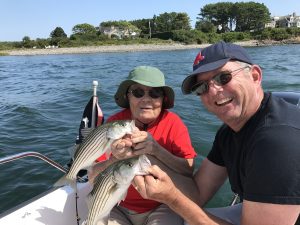 I go to the Mousam River. It is a very long winding river that flows past my nephew’s backyard, in Kennebunk, Maine, and into the Atlantic Ocean. This river flows through a rich estuary, forest, and tidal marshes. Most of this river is within the Rachel Carson Wildlife Preserve and not too far from President Bush’s Estate.
I go to the Mousam River. It is a very long winding river that flows past my nephew’s backyard, in Kennebunk, Maine, and into the Atlantic Ocean. This river flows through a rich estuary, forest, and tidal marshes. Most of this river is within the Rachel Carson Wildlife Preserve and not too far from President Bush’s Estate.
This water is a blessing to me because it brings my family and friends together for sharing fun times. During my many trips on the river, whether fishing or just enjoying the peace and silence of nature which surrounds me, is a blessing in itself. Sometimes, in the stillness on the water, I will spot an owl, eagle or even a moose at the river’s edge. This silence or stillness is only broken when I hook a big fish. Then, all creatures begin to fly away from my very excited voice. I pull the fish in, give it a good look and measurement, and then, maybe take a funny picture. Next, I throw the fish back into the river with message. “Go grow up.” “Live a little longer in God’s beautiful ocean.” “I will catch you on another day.” You are all welcomed to come and share this blessing.
Bedford Basin
by Sister Sheila Moore, Nova Scotia
Since 1873, when our early Sisters first moved to our newly purchased Mount Saint Vincent property, Bedford Basin has been of real significance to our community. Much of the history of Halifax and our history is related in some way to Bedford Basin, that beautiful body of water which is an extension of Halifax Harbour.
In the very early days before the CN railway was established, Sisters and students had the distinct pleasure of going to the shore for recreation and a swim.
In 1917, the Halifax explosion took place in the Narrows, that very narrow body of water connecting the Harbour to the Basin. The collision of 2 ships, one carrying highly flammable munitions, caused catastrophic damage to the North end of Halifax and significant damage to the Motherhouse, especially to the Chapel. Windows were shattered, doors blew off their hinges and plaster fell from the walls everywhere. Since St. Joseph’s convent in the city was totally destroyed, the Sisters living there came to the Motherhouse looking for shelter as did some of the wounded whom the Sisters nursed and cared for.
During World War II, the sisters could see from their windows the ships of the British navy, lined up neatly, row by row, waiting for orders to cross the Atlantic in convoys, to bring troops and supplies to our allies in England. To protect the crews and ships from enemy submarines waiting outside Halifax Harbour, intermittent smoke screens in the Basin and Harbour blocked the view of any ships entering or leaving our waters.
Needless to say, the sisters prayed constantly for the safety of our troops and a return to peace.
Again in 1945, shortly after the end of the War, the Sisters and indeed all of Halifax, were faced with another explosion, this time at the Bedford Magazine, on the shores of Bedford Basin. An ammunition barge exploded setting a quantity of live shells on fire. Halifax residents were ordered to evacuate. The Sisters evacuated to the hills behind the Motherhouse. Again buildings were rocked and windows were blown out.
In recent years, Sisters watch as sailboats of every size, pass by. We are fascinated by the parade of supertankers that seem to glide effortlessly into Fairview Cove to load and unload an endless number of containers with goods for the city, the province and beyond.
But now, in our time more than anything else, we see the waters of Bedford Basin as a thing of Beauty, to be enjoyed and admired every day. From our position on the hill, we see the Hand of God in the ever-changing cloud formations above the water and in the tides and currents of the water below.
We are grateful to God and our early Sisters for the gift of our home on the hill overlooking beautiful Bedford Basin.
Photos of the Bedford taken by Sister Elaine Nolan

by Sister Elaine Nolan, Massachusetts
A swan has a seemingly contemplative moment
slowing its glide along the Mystic River in Medford, Massachusetts.
Ripples encircle the graceful bird
as it sees its reflection on the river’s surface.
The swan reverences the water.
It relies on this precious resource for its sustenance.
How could it live without it?
How could we?
Lake Laberge
by Sister Mary Palardy, Nova Scotia
During my teaching career, I’ve been blessed to live in different areas of the Congregation, each containing life-giving bodies of water. Bermuda, the small but resilient island, is surrounded by aquamarine ocean and lush vegetation. My classroom in Vancouver overlooked English Bay with the majestic coastal mountains beyond. In Whitehorse I crossed the Yukon River daily on my way to school alternating between walking, biking or driving.
It is not easy to choose one special Yukon lake or river but for me, Lake Laberge has a spirit all its own.
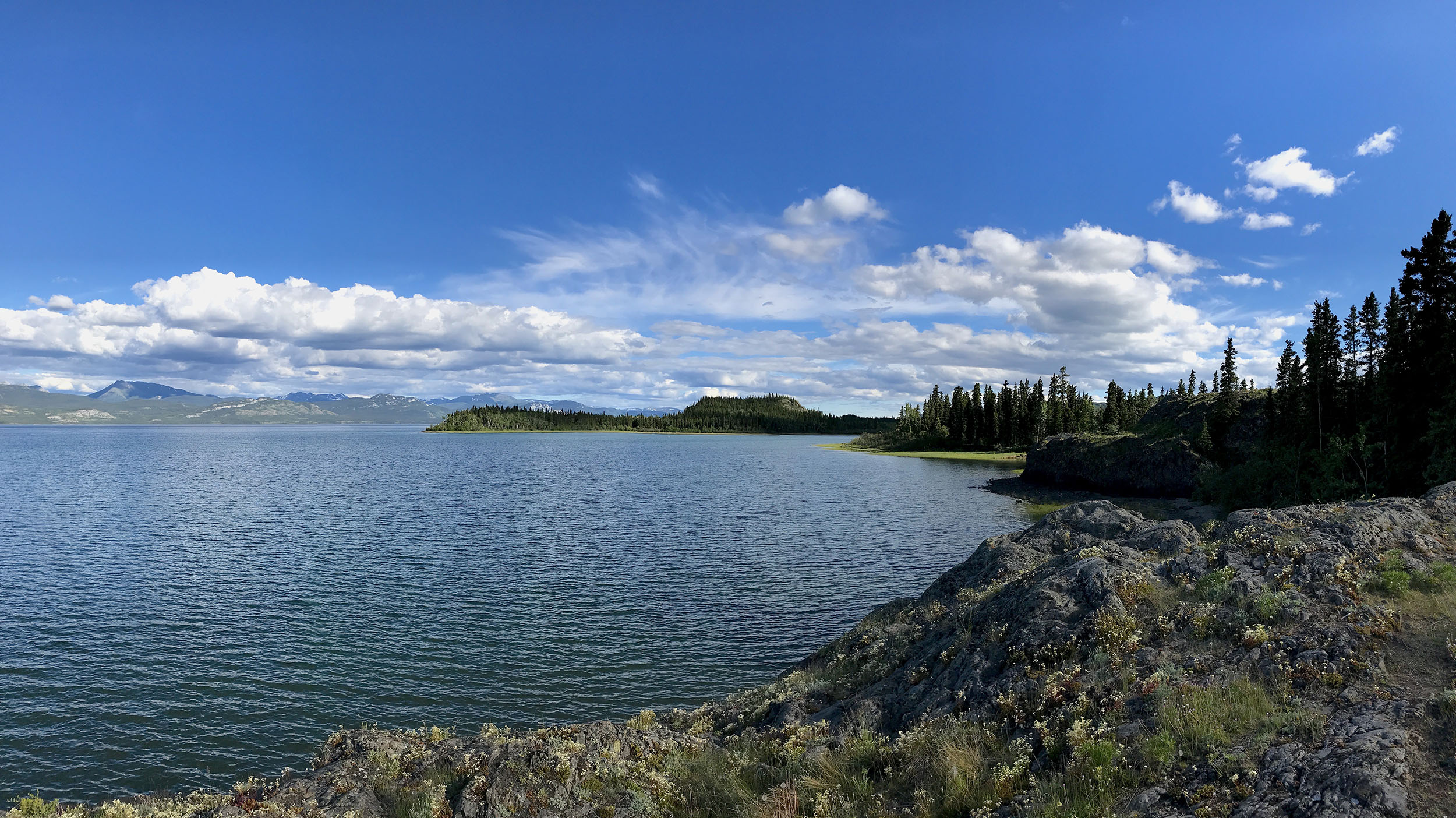
Photo by Joe Kanary, Whitehorse, YT (formerly of Glace Bay, NS)
Even now, years later, I’m reminded once again of the quiet but immense beauty of this pristine lake. At times, the Catholic School Teachers held their annual retreat at the Baha’í Centre on the shores of Lake Laberge. The Centre consisted of small cabins encircling the main meeting area. We met in the Fall when nights turned colder and daylight shorter. Each cabin had its own wood stove and thankfully someone kept the fires burning throughout the night. The brisk walks along the lake added a certain mystique in making the weekend exhilarating while easing the tensions and busyness of school life. Sometimes we were favoured, and glimpsed the bright lights of the aurora borealis dancing across the night sky! Lake Laberge became a symbol of what I wanted to share with my students regarding their Yukon home on all levels – the history, the beauty, and above all, the responsibility in caring for their environment. In reality, I realize they already appreciated the grandeur of these mountains and lakes long before I arrived. Hopefully, my efforts confirmed their desire to preserve this legacy for future generations in the far north.
Lake Lebarge also brings to mind the time when the ‘Sisters of the North’ dramatized: “The Cremation of Sam McGee” for Sister Louise Bray and Council. This was a different ‘sight’ to behold! I conclude with the beginning and ending of this poem by Robert Service:
“The Northern Lights have seen queer sights,
But the queerest they ever did see
Was that night on the marge of Lake Lebarge
I cremated Sam McGee.”
Early Morning Beauty
by Sister Edna Walsh
The freshness of early morning beckons me often to sit in wonder at the edge of a pond in Van Dusen Gardens, Vancouver, B.C. It is home to ducks and Canada geese who gather at one end of the pond. A large field of water lilies are at my feet, fish lazily swim, dragonflies pause on the pads along with water nymphs.
Sitting on a conveniently located bench, I am aware of the numerous gifts of nature surrounding me and I pray in gratitude to our Creator God who knows what I need. As I leave, more natural beauty delights me – all this in the middle of a busy, noisy city!
The Many Faces and Voices of Water
by Sister Evelyn Williams, Nova Scotia
Having spent most of my life near water, I have known my love for and fascination with the many faces and voices of water. I delight in remembering my earliest toddler experiences of splashing through water-filled potholes on country roads, my repeated attempts at filling moats around sand castles at the beach and waiting patiently for the tide to come in for “swim time”.
As I grew a little older, I remember the magical mix of wind and water as I learned to sail and kayak. Learning to dive opened for me a new mysterious quality of being embraced by the God of the deep – all youthful experiences of fun, refreshment and mystery that somewhat touched me deeply.
I am gradually learning that water offers many gifts that refresh and renew my spirit: invigorating ocean swims, majestic crashing waves and teeming rains, a lakeside or ocean sunset, magnificent waterfalls and the companionship of a gentle moving stream. Water shared by all living things is a sacred symbol in most religious traditions and along with the entire natural world a revelation of God.
My awareness of water has moved from wonder and awe to appreciation and reverence and to responsibility for such a gift. It is out of this wonder, awe and responsibility that I am challenged to approach water issues such as the human rights to water, privatization, pollution, global warming and so many other affronts to our earth which we know is losing its capacity to feed and care for all life.
As I grow older, I want to continue to be open to every opportunity to allow the waters around me to nurture my spirit and to listen more deeply to the many voices of water that challenge me to care for our precious universe – because it matters.
Other Voices
A Watershed Story
by Katia Bannister
Katia Bannister is a 16-year-old youth climate activist and community organizer from Thetis Island, B.C. She leads the Cowichan Valley Earth Guardians crew, who strive to create meaningful change involving social and environmental issues. Katia is in Grade 11 at Queen Margaret’s School in Duncan and plans to pursue a career in ethnoecology. She has a passion for restoration and conservation work, poetry, blogging, and she is currently learning to speak the Hul’qumi’num language.
Sister Gertie Jocksch met Katia at a webinar: A Solstice Celebration of Fresh Water Change Makers.

 Water has always been a big part of my life. Even when I was very little I could be found identifying strange new creatures in the rivers and the ocean. I often accompanied my mom, ethnobotanist Kelly Bannister, on her work excursions. We visited the Chemainus River, Somenos Marsh and the Cowichan River. And though my memories of these trips in my early childhood are now fuzzy, I know they played a huge role in my relationship with and love of water.
Water has always been a big part of my life. Even when I was very little I could be found identifying strange new creatures in the rivers and the ocean. I often accompanied my mom, ethnobotanist Kelly Bannister, on her work excursions. We visited the Chemainus River, Somenos Marsh and the Cowichan River. And though my memories of these trips in my early childhood are now fuzzy, I know they played a huge role in my relationship with and love of water.
Now, about eleven years since the last of those trips with my mom, I am back at the river. Doing different work, in the same spirit of reciprocity, ecological sanctity and land-based learning. Years later I am still ever my mother’s daughter, emulating her in my work on the Cowichan River and all its tributaries.
I am the leader of the Cowichan Valley Earth Guardians crew. Earth Guardians is a global youth-led organization that seeks to train diverse youth to be leaders in the climate, environmental and social justice movements. Earth Guardians achieves this through the creation of direct action crews. Currently there are around 300 direct action crews all around the world.
One of the activities my crew enjoys most is doing restoration, remediation and regeneration work. We often are invited to plant trees along the Cowichan River and its tributaries to stabilize the river banks, or to plant native species to restore riparian areas in the Cowichan Bay Estuary.
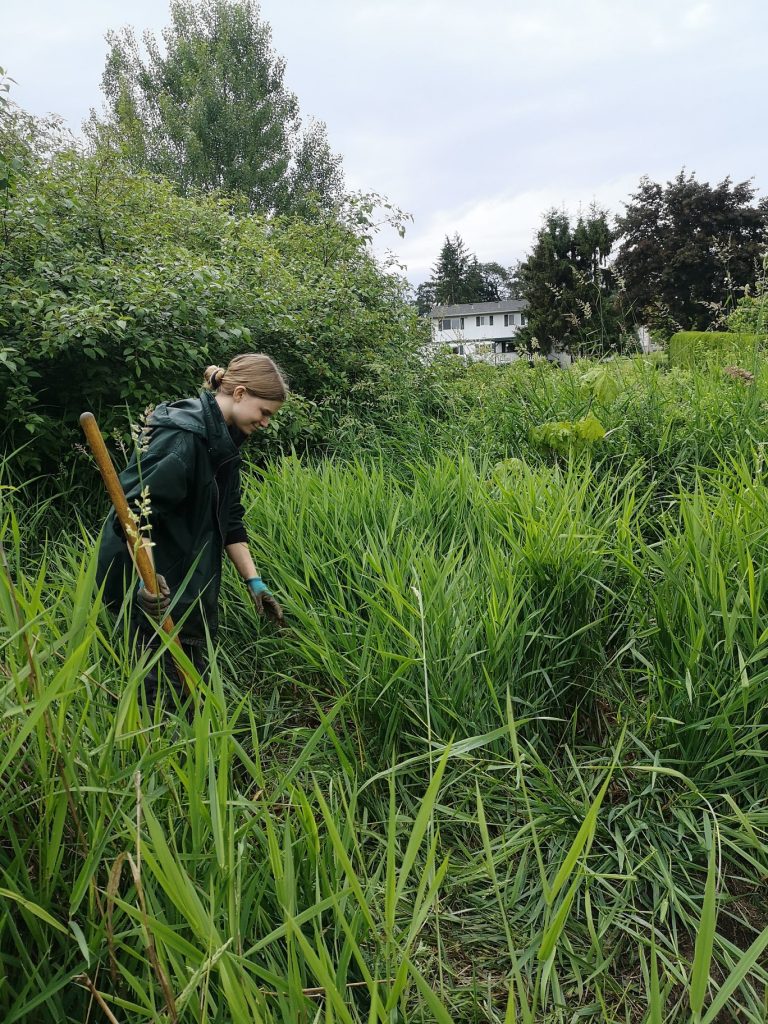 The degradation of the Cowichan Bay Estuary started when the first European colonizers settled on the land belonging to the Quw’utsun people, and began to undermine their land and water rights. Throughout the last 150 years, urban development has completely reshaped and degraded the health of the estuary ecosystem in the Cowichan Bay Estuary. The estuary has been used as a port for logging export, its tributaries and channels were diked and ditched, the bay itself was dredged and the estuary and river were left polluted. Riparian cover was also destroyed as homes and roads were constructed. Due to the combination of heavy urban and industrial development, the Cowichan Bay Estuary ecosystem has been severely damaged. However, the estuary has historically been one of British Columbia’s most prolific salmon nurseries and in order to save declining Chinook salmon populations, restoration efforts are required.
The degradation of the Cowichan Bay Estuary started when the first European colonizers settled on the land belonging to the Quw’utsun people, and began to undermine their land and water rights. Throughout the last 150 years, urban development has completely reshaped and degraded the health of the estuary ecosystem in the Cowichan Bay Estuary. The estuary has been used as a port for logging export, its tributaries and channels were diked and ditched, the bay itself was dredged and the estuary and river were left polluted. Riparian cover was also destroyed as homes and roads were constructed. Due to the combination of heavy urban and industrial development, the Cowichan Bay Estuary ecosystem has been severely damaged. However, the estuary has historically been one of British Columbia’s most prolific salmon nurseries and in order to save declining Chinook salmon populations, restoration efforts are required.
I find reciprocity and a sense of relatedness in being able to do ecological restoration work. It is my way of caring for and giving back to the land and water that have not only cared for me but for the entirety of my community, both human and ecological. Our responsibility to the land as humans is to be responsible for our actions. We must be good stewards of the earth, as our own stewardship, and indeed our lives, are reliant on the earth itself.
I think volunteer opportunities for land-based learning and restoration work are key to facilitating a universal understanding of the importance of reciprocity with the earth. Giving people opportunities to build meaningful relationships with local ecology will help them to understand the importance and value of ecological health. This in turn raises our collective ecological awareness and facilitates more opportunities for environmentally just decision making.
While my own thoughts about the importance of ecological health have always been well- formed, I think that being able to do this work has allowed me to expand my thinking, and my empathy as someone who wants to pursue a career in ecology. It is for this reason, among others, that I am so grateful for having an ongoing, reciprocal and ever-evolving relationship with the Cowichan River, the Cowichan Bay Estuary and all of its tributaries. From that relationship, a love and respect for water has grown in my heart and it continues to live within me and be ever present in my actions.
Modeste Demers in Bowker Valley
by Gerald Harris, British Columbia
For Gerald, unity with Earth life is based in physical engagement and contact. He works and leads in native habitat renewal projects in urban watersheds, and supports the work with prose, poetry and many committee meetings. Participating in Earth Literacies programs strengthens and clarifies Gerald’s calling to reconnect himself and others with the community of life, local and global, inner and outer.
Gerald has been volunteering in Bowker Creek restoration for more than a decade. He serves as a Director of the Friends of Bowker Creek Society.
Sister Gertie Jocksch and Gerald are colleagues.
Historical records show Bishop Modeste Demers as the first farmer in the valley where I live; they show that he grew potatoes here. I grow potatoes too. I feel the connection and it disturbs me.
The Bowker Creek watershed is a valley in recovery. It functions now as a stormwater management unit for a thousand hectares of urban Saanich, Victoria and Oak Bay. Pavement and other impermeable surface cover almost half of the valley. Its creek functions as storm sewer. For more than half its length from the source at University of Victoria to the sea at Oak Bay, 8k, Bowker Creek flows underground in culvert.
The recovery plan for Bowker Valley bears the title: Bowker Creek Blueprint – a 100-year action plan to restore the Bowker Creek watershed. Municipal engineers recently begin to recognize that the valley had done a lovely job of managing its own stormwater for about 6000 years before Modeste Demers and I broke its soil for potato growing. In 150 years, we’ve made a mess of it.
The creek now rages, floods and shrivels by season, and sends polluted water into the Salish Sea. As a freshwater ecosystem, it’s broken. We haven’t seen a salmon run for a century. So now we have the Blueprint. Saanich, Victoria and Oak Bay municipalities all endorsed it in 2012. We have officially committed ourselves here to a process of returning some natural functioning and ecological health to stream and valley.
My personal involvement in the process is with Friends of Bowker Creek Society, an advocacy group. We do what we can to enlist popular support for Bowker Creek Blueprint goals and to remind the municipalities to keep implementing them. One of our initiatives this year is a Chum Salmon Recovery project to bring back those fish to the lower reaches of the creek. Another is a Creekside Concert series, with bicycle-powered music events, Covid-aware, at outdoor locations along the creek. The site of Modeste Demers’ potato patch is one of our concert locations in July. The Diocese of Victoria has kindly permitted us to use a field adjacent to St. Patrick’s Elementary School playground.
That connection of potato-growing, Bishop Demers and Bowker Valley recovery prompted me to write this poem:
The bishop’s potato patch, he dug right here.
Newly consecrated Bishop
Modeste Demers in his new-made Diocese of Vancouver Island,
of only two priests, one at Fort Nanaimo,
one at Fort Langley, and its Bishop, here, parish priest
to the village on the other side of the hill around the Fort beside the harbour,
Victoria, 1852, impoverished but energetic,
repaired clocks and watches and took out a land grant
in Bowker Valley at this place, cleared away willow thickets,
straightened out the creek as ditch to drain swampy land,
fenced a field beside the ditch, broke and turned the soil
and grew great potatoes.
Land – the valley never pictured
itself, until then, as land.
Bowker Valley had seen itself
more as relationship among place and creatures
interdepending: humans, cutthroat trout,
Yellow warblers, willow thicket, across millennia, linked and bound
by fibres of obligation.
Land – property –
the concepts muted the valley,
froze it like an object
people could own and treat like dirt, rendered it comatose,
faded it invisible,
until this century
when Bowker Valley awakens, and speaks up inside people,
speaks out now:
Listen to your valley,
local adaptive capacity, in this concerted rush
into super-abundant messy, super-diverse
unity, which is life, which is intelligence,
to this remembered wetland, willow swamp, abuzz,
adrone with so many insects, asplash with cutthroat
that leap for insects in the air, attwitter with yellow birds
that pick insects in June for nestlings, in October to fuel flight to the Andes.
Restore our relationship; take up your obligations;
come home.
Our Corporate Stance on Water
We, Sisters of Charity, resolve to pray, study and act to assure the just sharing of water for life on earth.
So why would we need bottled water? And the plastic bottles used to bottle it?
by Sister Cecilia Hudec, British Columbia
At the Union of B.C. Municipalities convention last fall, a majority of local governments and First Nations voted to call on the province to stop issuing licences to commercial water bottling operations. It was an exciting win that demonstrated the power of grassroots communities coming together to protect B.C. water for current and future generations.
Recently, the Ministry of Forests, Lands, Natural Resource Operations and Rural Development said they will continue issuing licences for water bottling. The Ministry treats groundwater extraction for commercial bottling the same as any other use and maintains that there is sufficient water for extraction and commercial uses.
This is unacceptable and displays a lack of respect towards the request of these municipalities, First Nations and communities, and shows complete disregard for the future of B.C.’s water.
In the last few years, droughts, floods and forest fires have repeatedly threatened clean water in B.C. The climate crisis will further put the water sources at risk.
Meanwhile, the bottled water industry continues to drain away this precious resource, bottling and selling water for huge profits. Most of the water bottled is destined for export. Exports of bottled water from B.C. increased 1,460% between 2008 and 2018. That means over 100 million litres of water each year are drained and shipped out of the province instead of replenishing the local watersheds.
The province is ignoring the threats to B.C.’s water from the climate crisis, and the millions of tons of plastic bottles filling our landfills and oceans as they review and issue water taking permits. In the Water Sustainability Act, the government also fails to recognize Indigenous title and the rights to free, prior and informed consent to water uses on their territories. Under the B.C. Water Sustainability Act companies pay a minimal fee of just $2.25 per million litres of water.
We must protect our water as a public trust and shared commons for community use and future generations, not for private profits.
Water Projects
by Carrie Flemming, Donor Relations Coordinator
“Access to safe drinkable water is a basic and universal human right, since it is essential to human survival and, as such, is a condition for the exercise of other human rights.” – Pope Francis
Since 2005 we have committed to making clean, safe drinking water more accessible for all. Initially, our projects took place in the Dominican Republic and Peru, where our Sisters have ministered. With the help of our donors, we have helped bring clean water and hygiene resources to hundreds of families in those countries.
Our most recent projects are taking place in El Salvador. Our partners, SHARE El Salvador, describe the country as being on the verge of “water stress” for many reasons, including climate change, indiscriminate logging of forests, and very few environmentally friendly practices, particularly in the agricultural industry. Water sources that have traditionally served communities are weakening, so families are increasingly at risk of inadequate access to water.
Our first project in El Salvador was completed earlier this year.
Our next project builds on the successes and learning from the first. Supporting a similar water system for five communities in another part of the Chalatenango region of El Salvador, this system will see 123 families receive access to clean, potable water, as well as receiving education and awareness of environmental practices, so they can help further support their community’s success. Although the COVID-19 crisis has slowed progress, we will keep you updated as things progress.
In addition to our support of clean water projects, we have also support projects that find ways to work with the natural environment to fulfill our human needs. One example is a hydroelectric project built by the Dominican Sisters at Queen of Peace Monastery in Squamish, BC. This project makes use of a creek running through the property to generate electricity for the Monastry. It’s part of a bigger overall focus by the Sisters to minimize their environmental impact.

